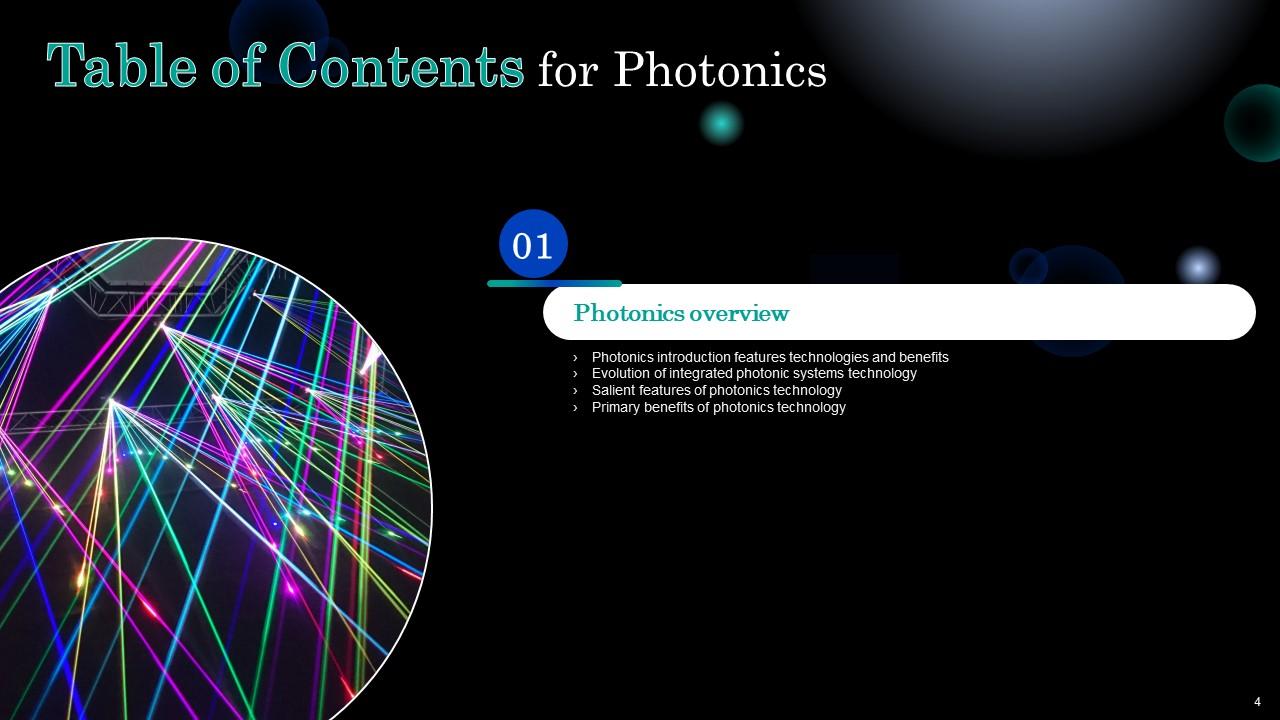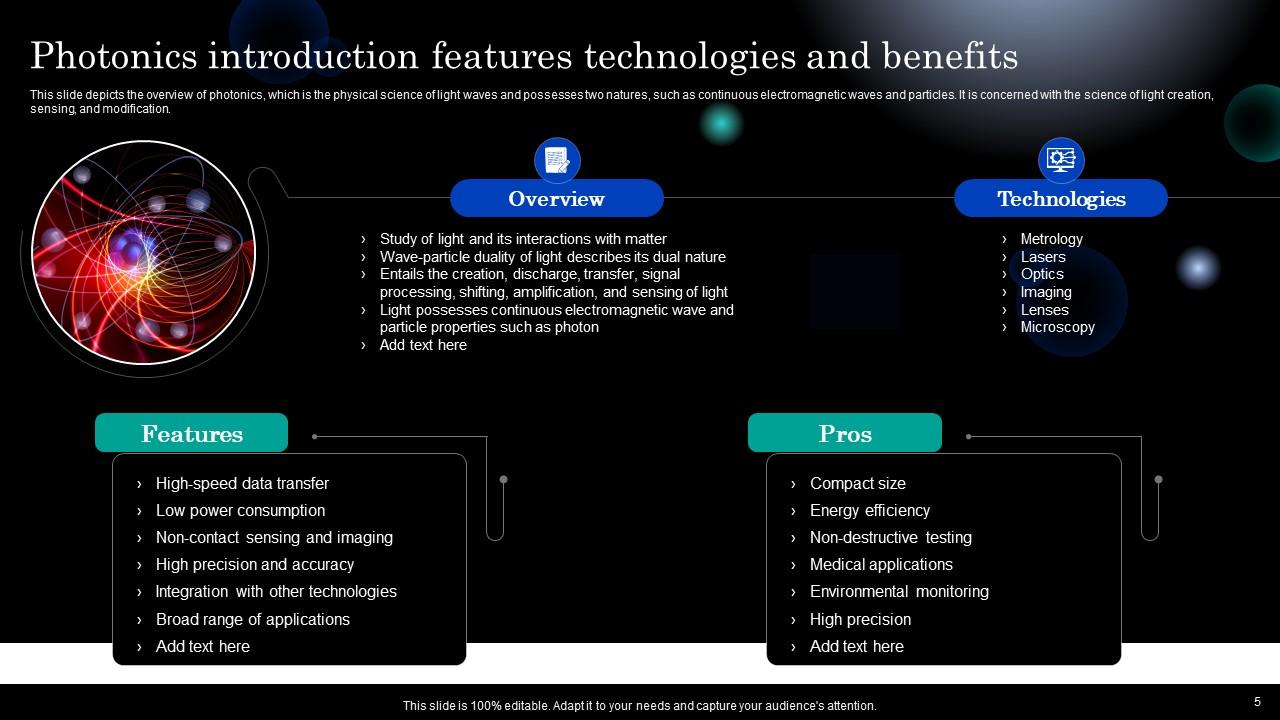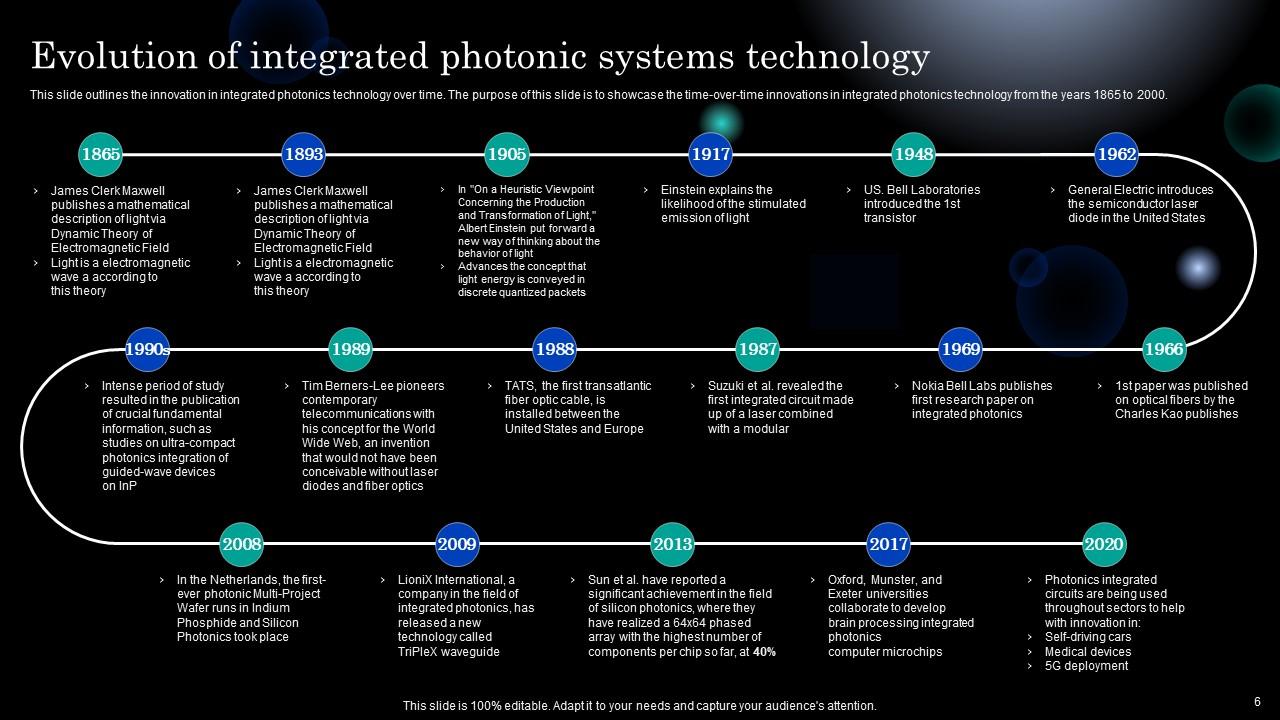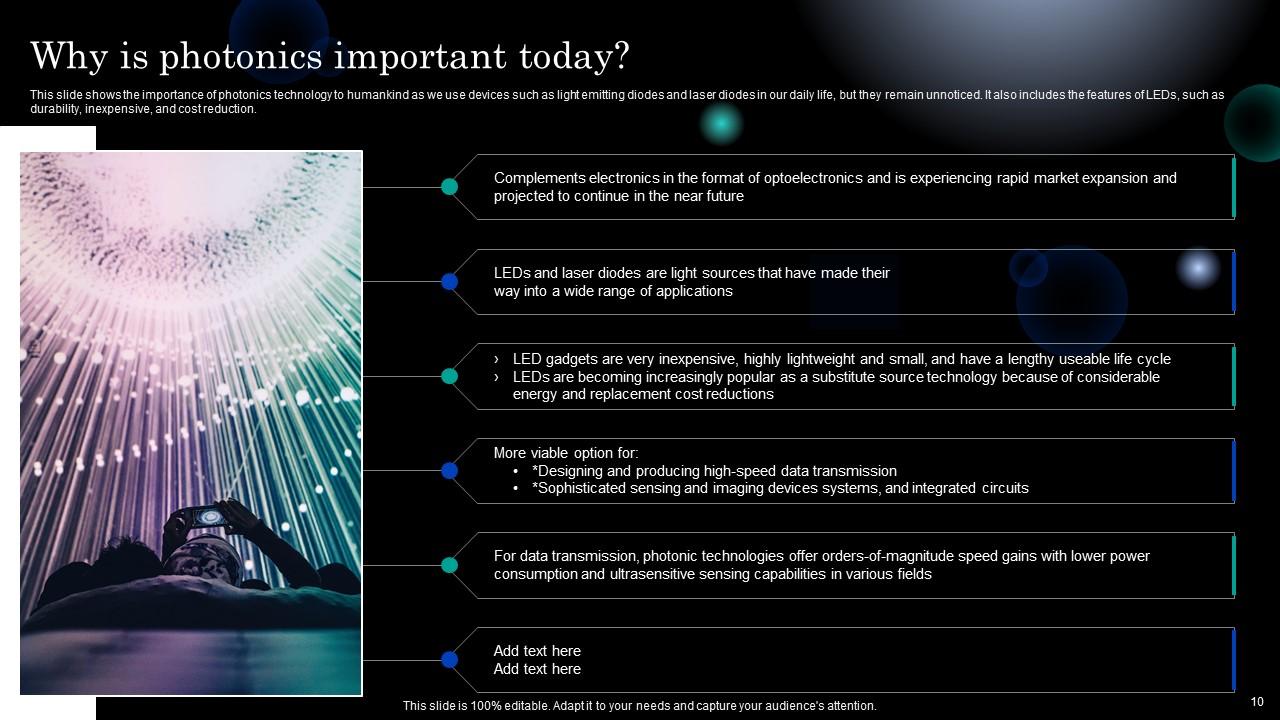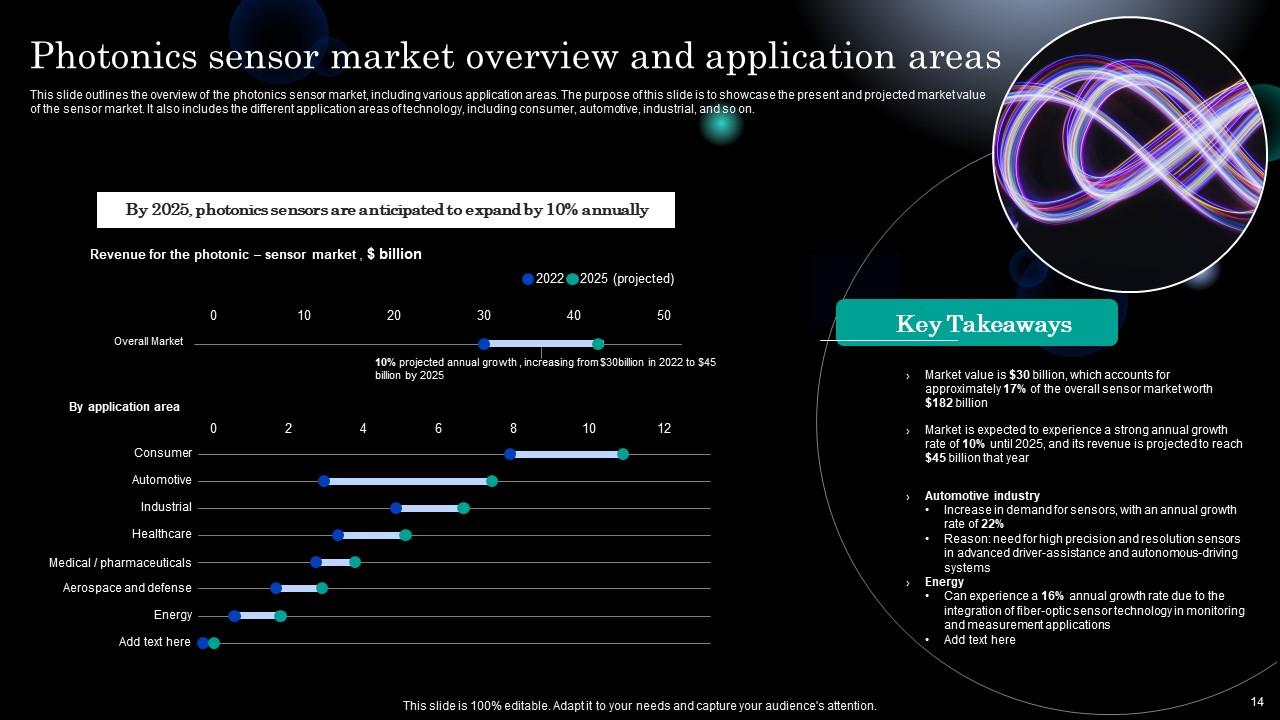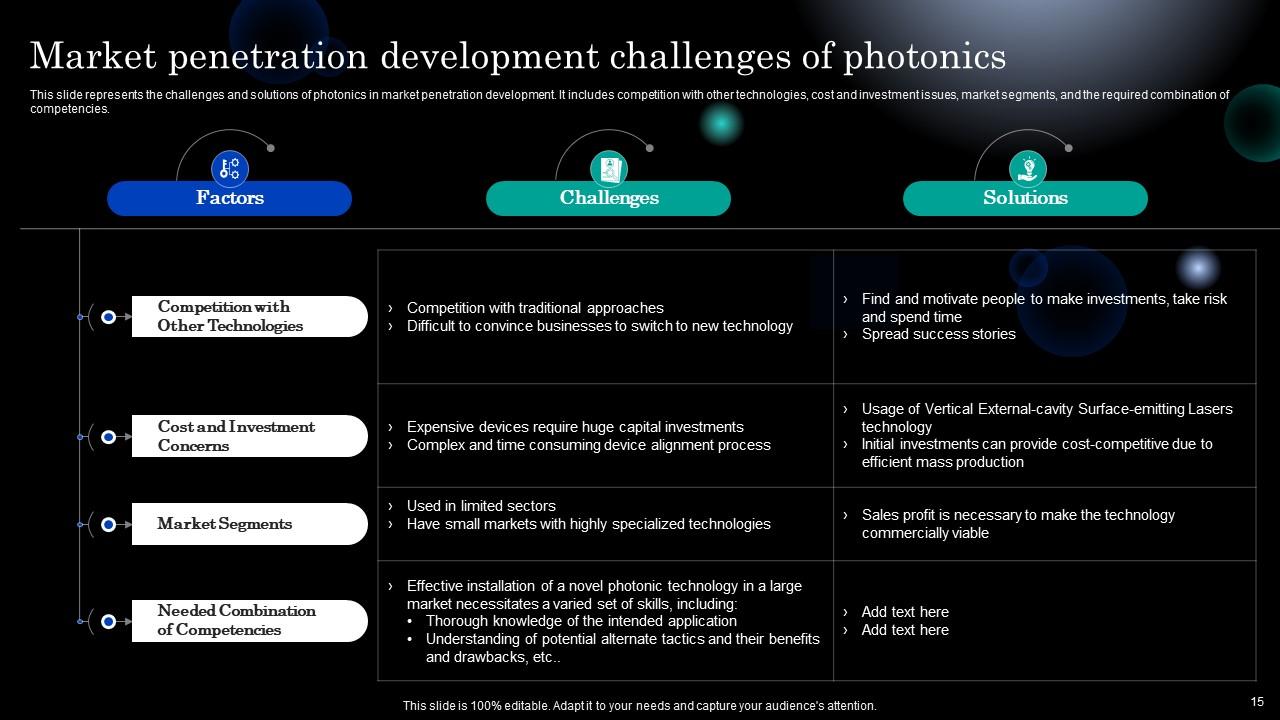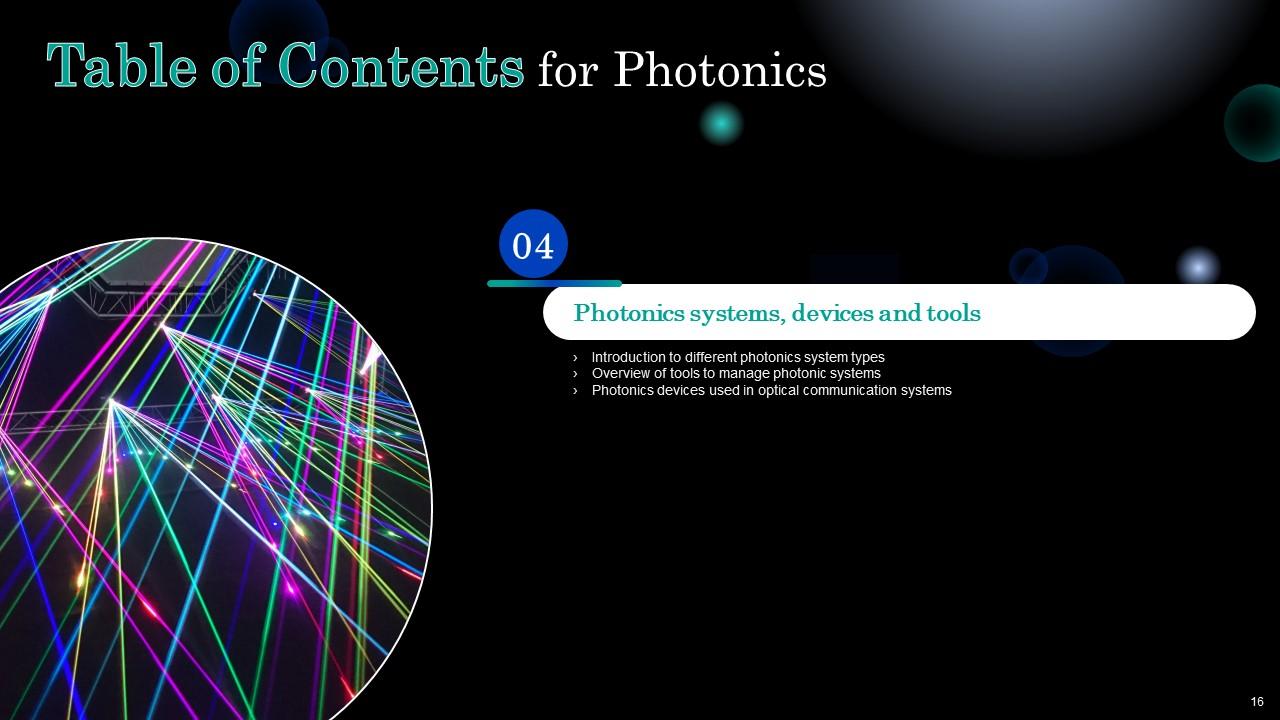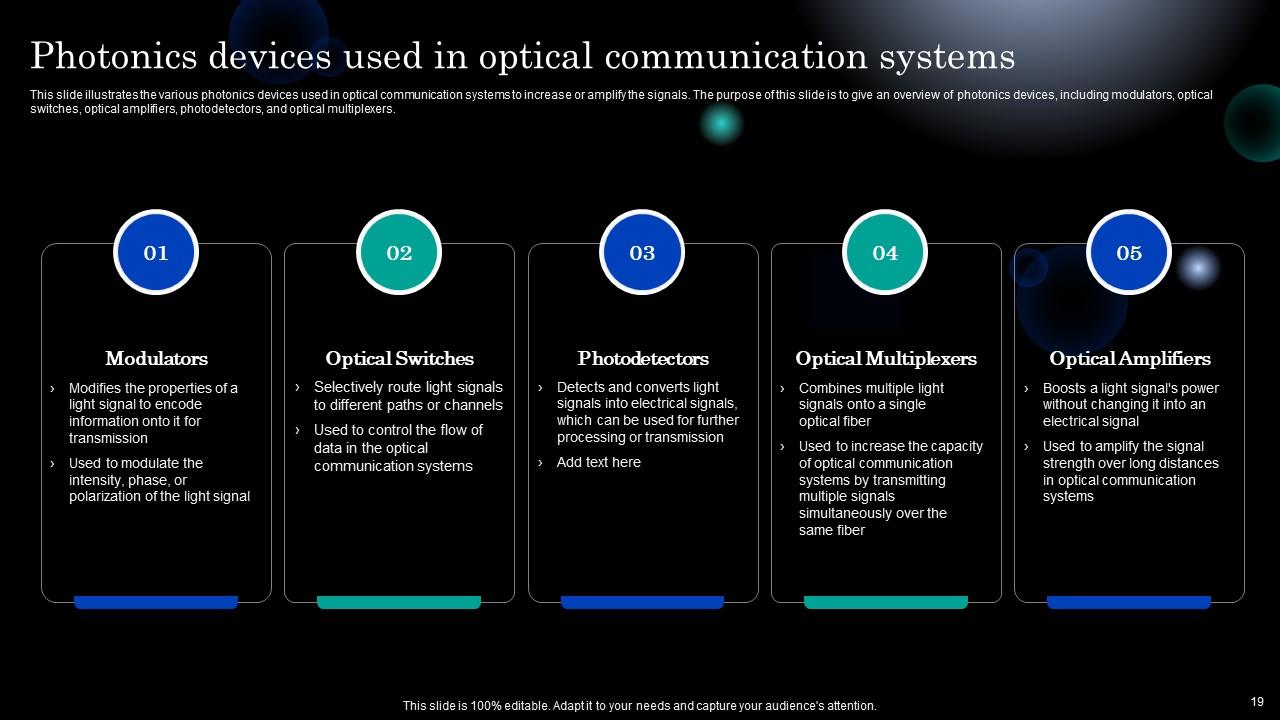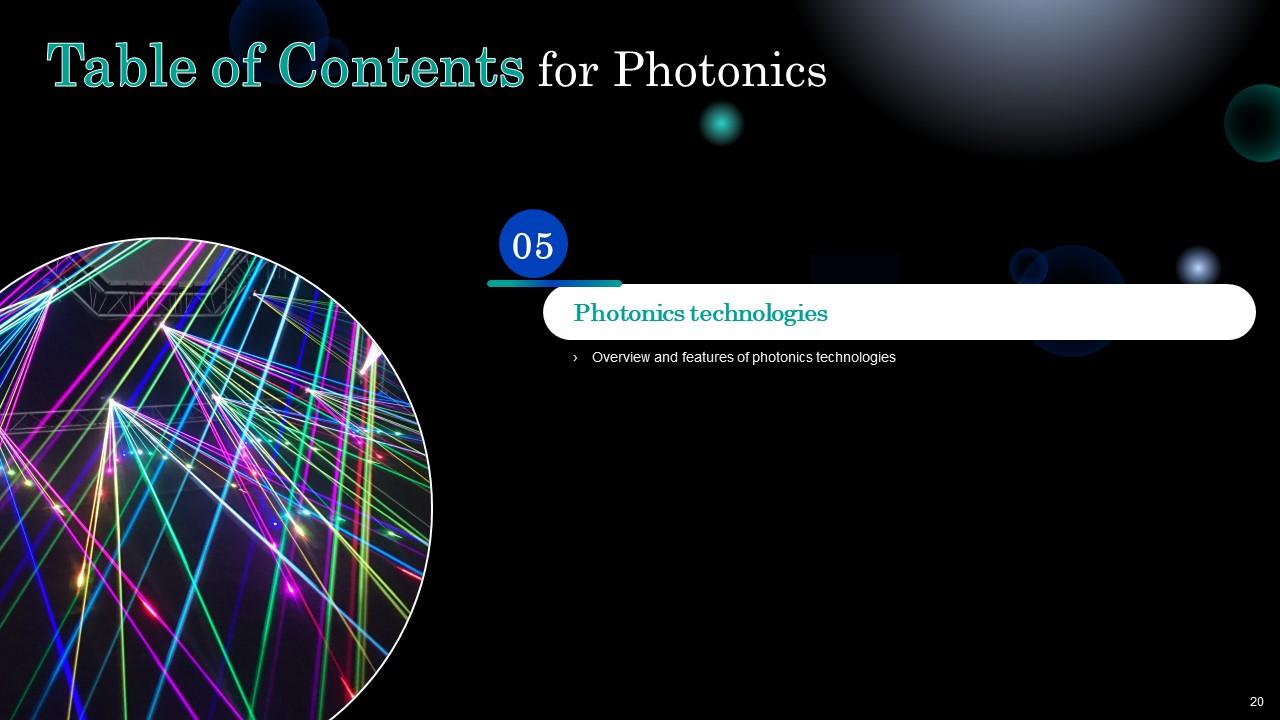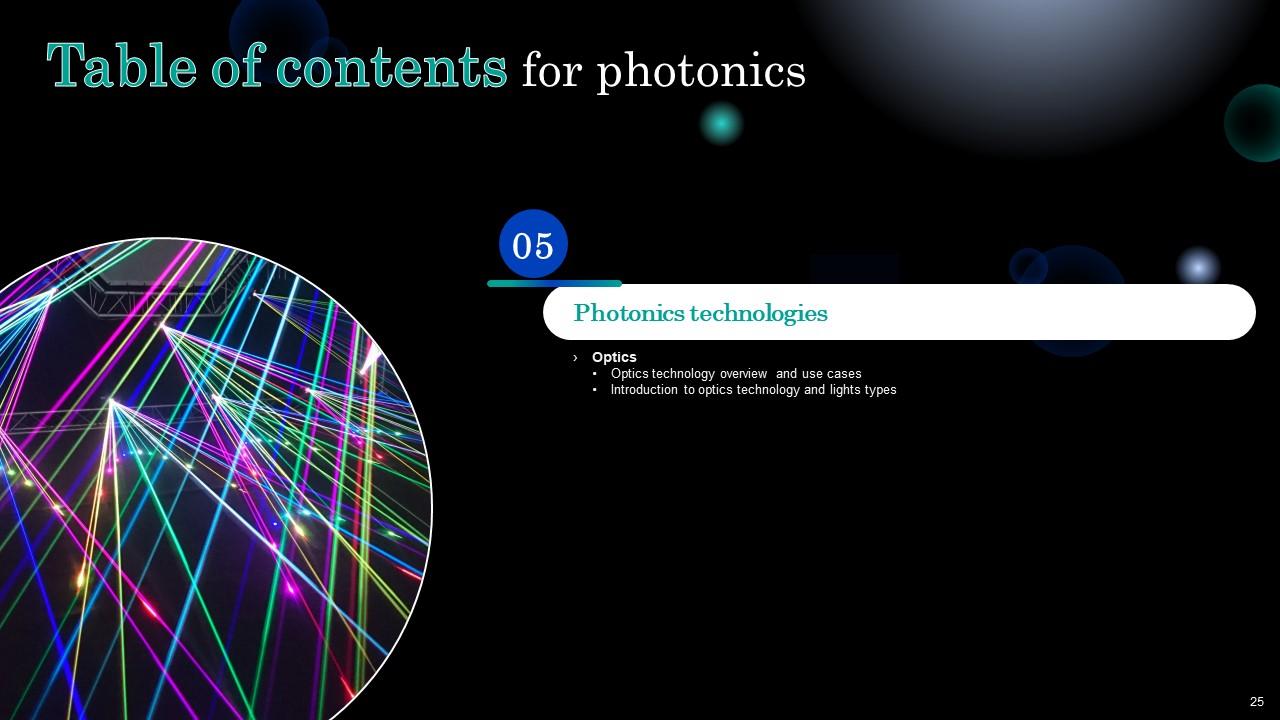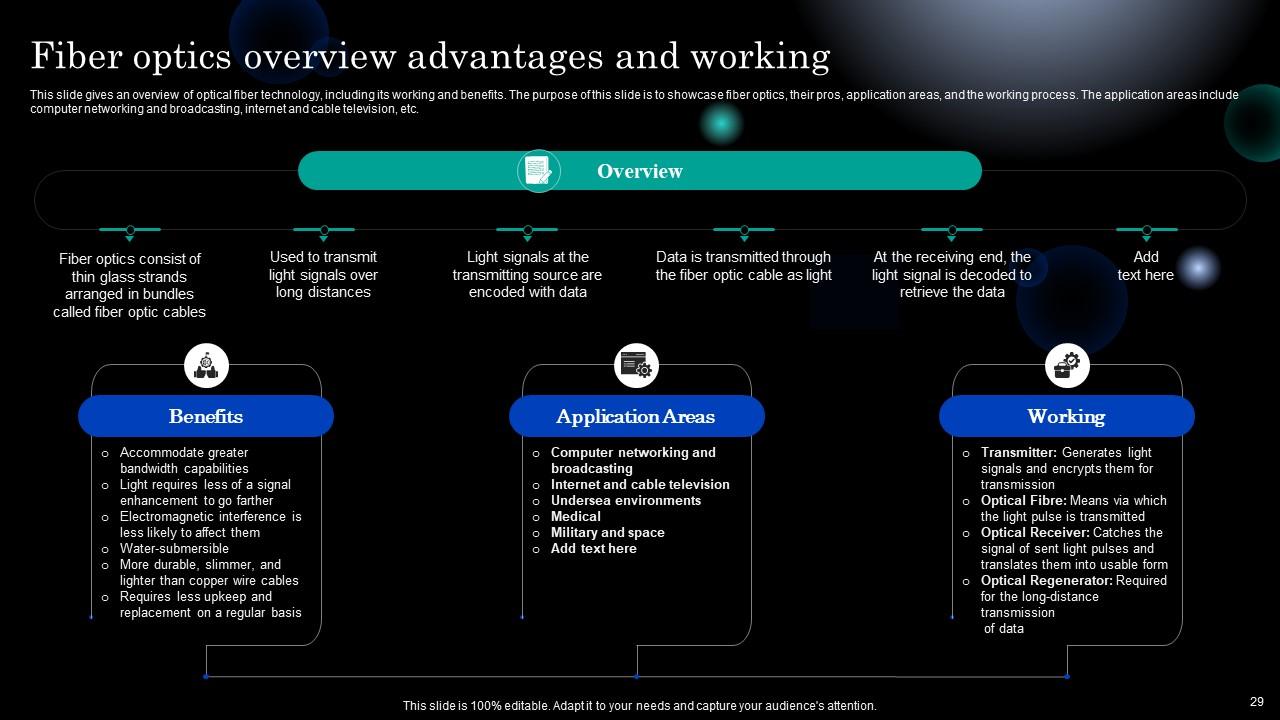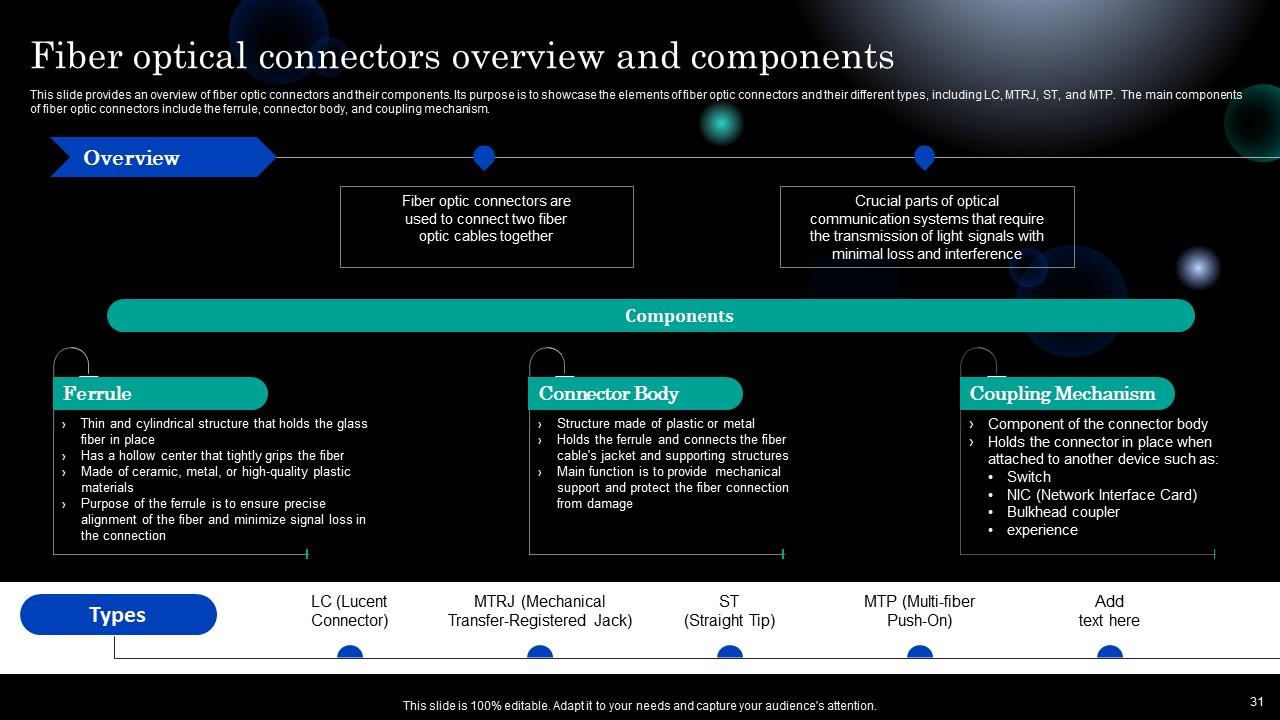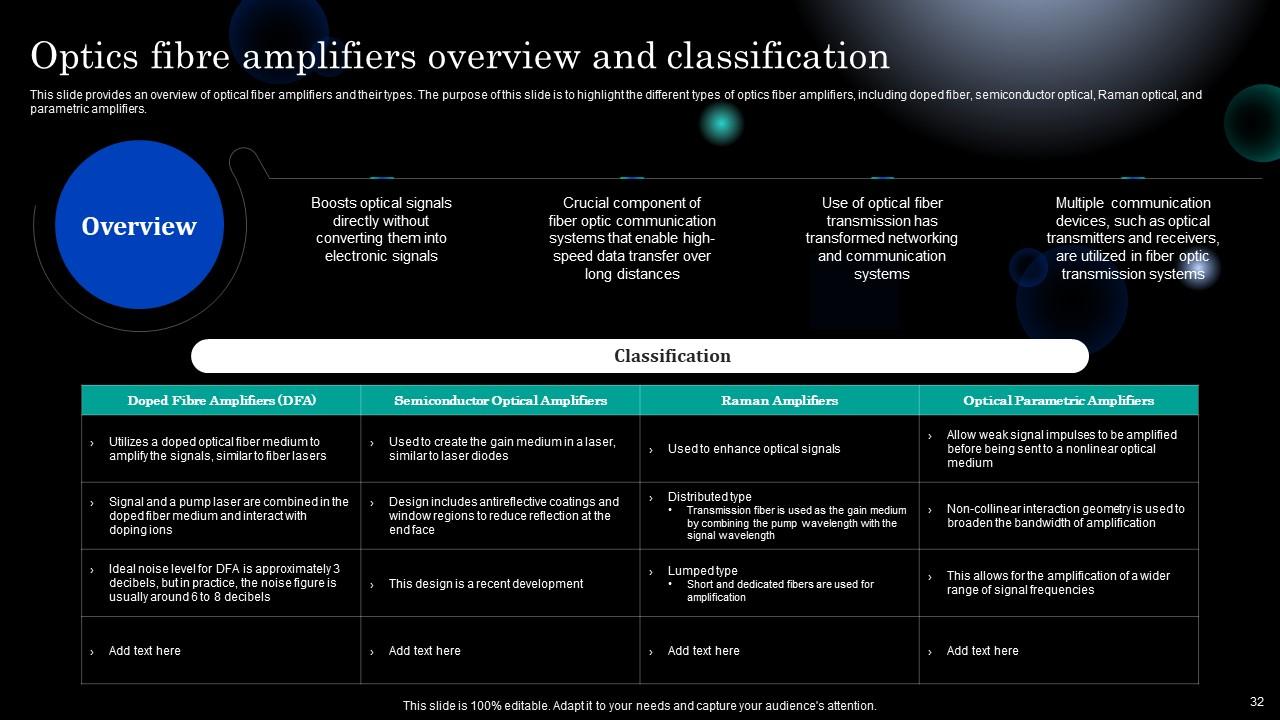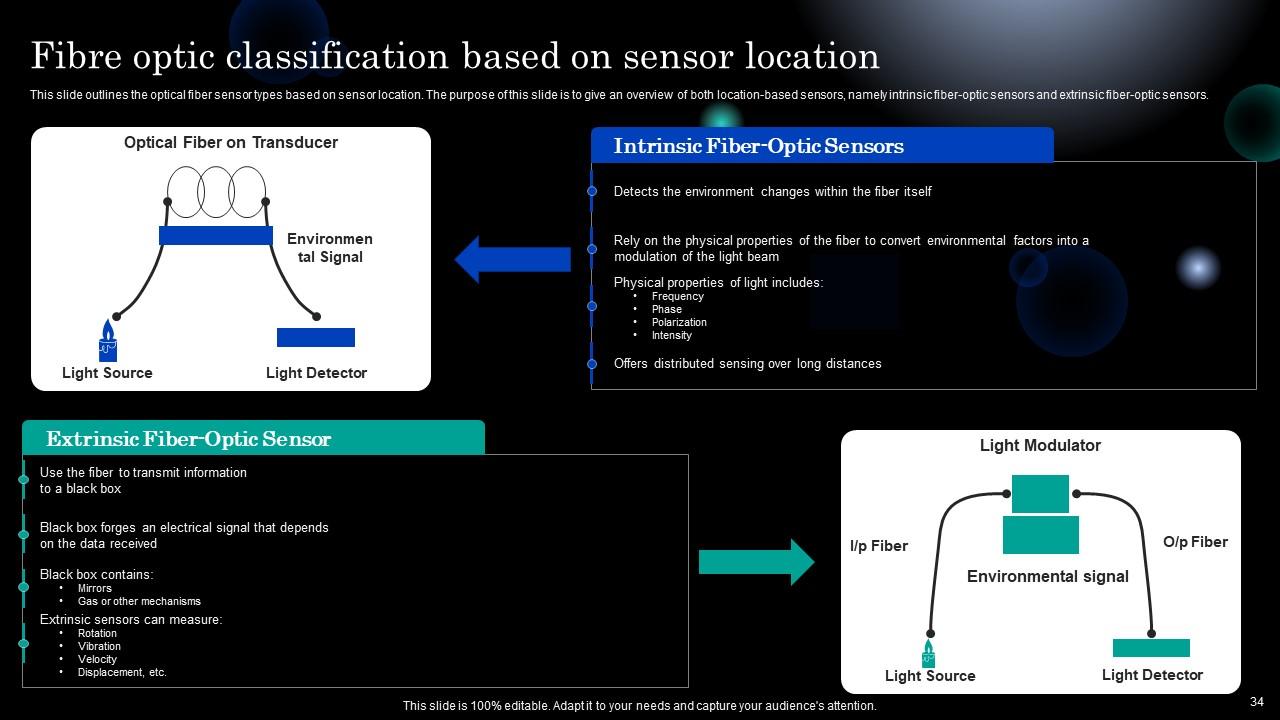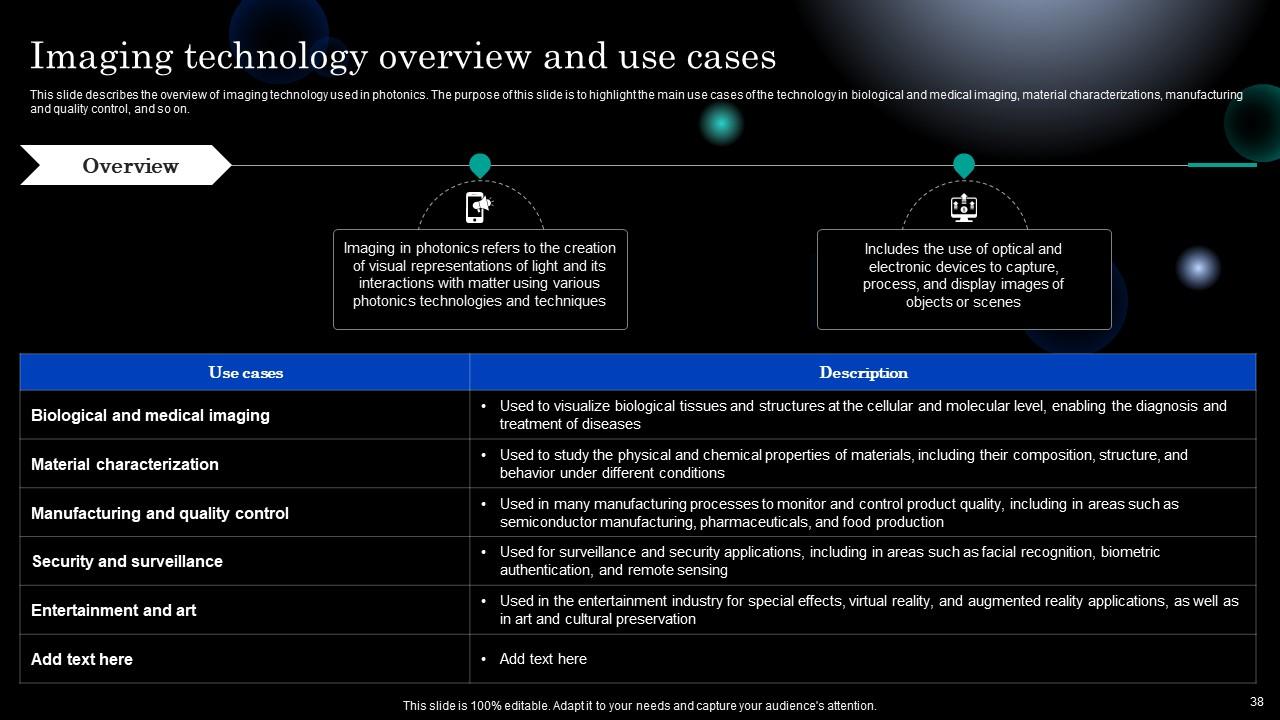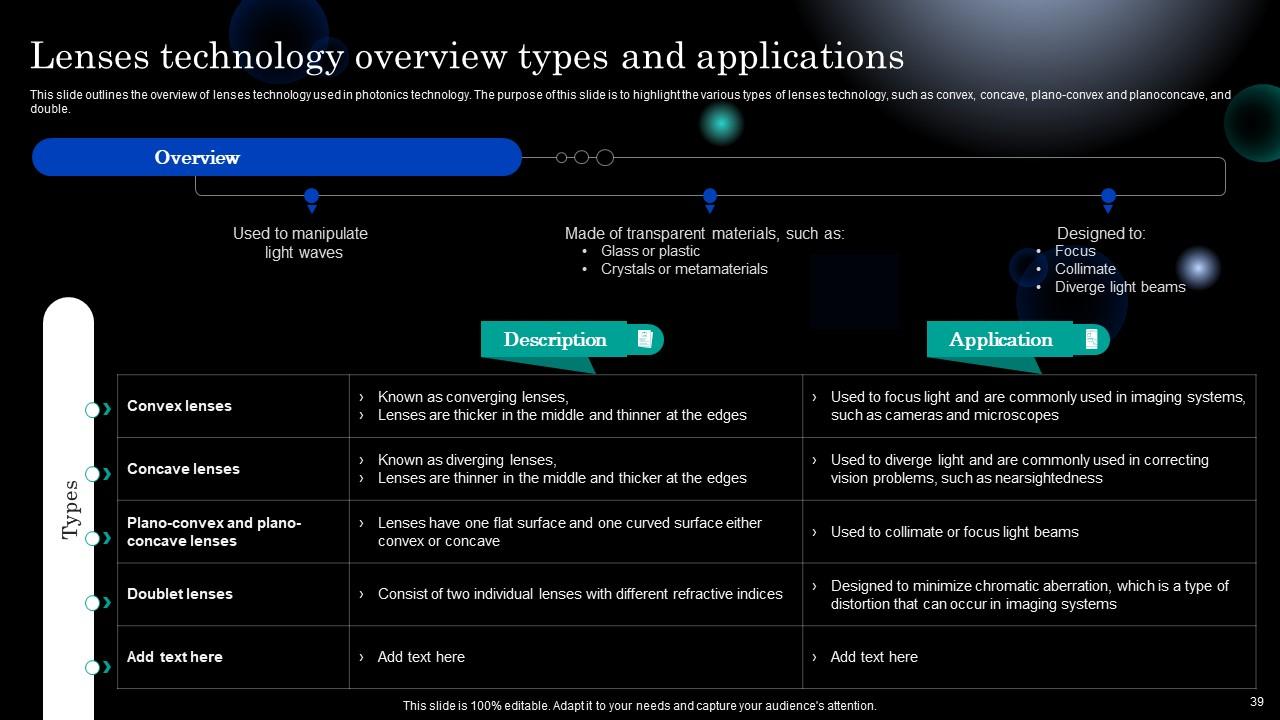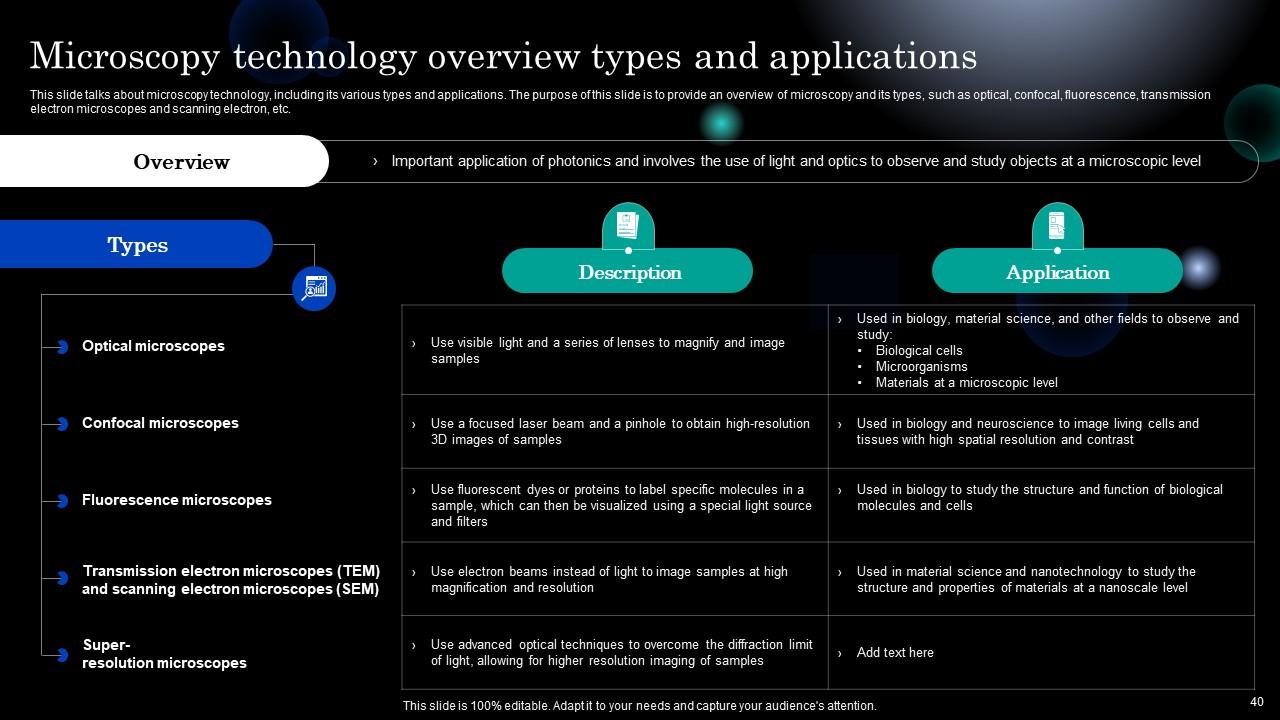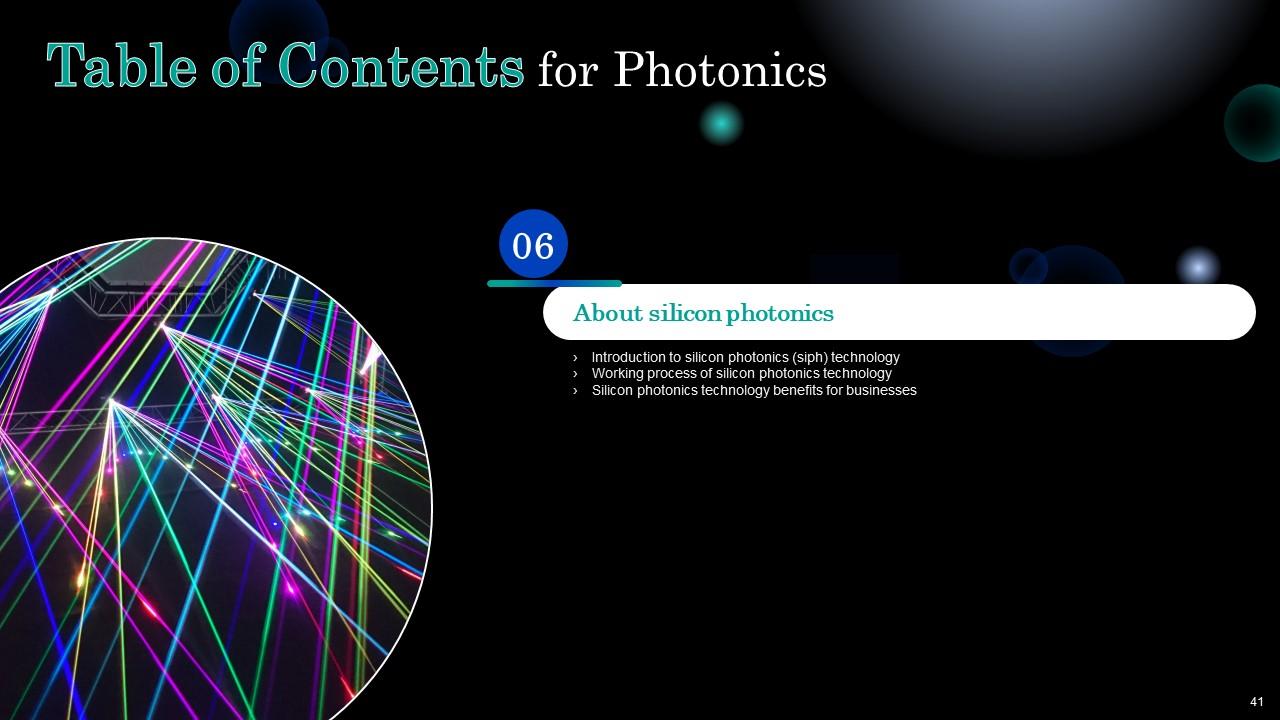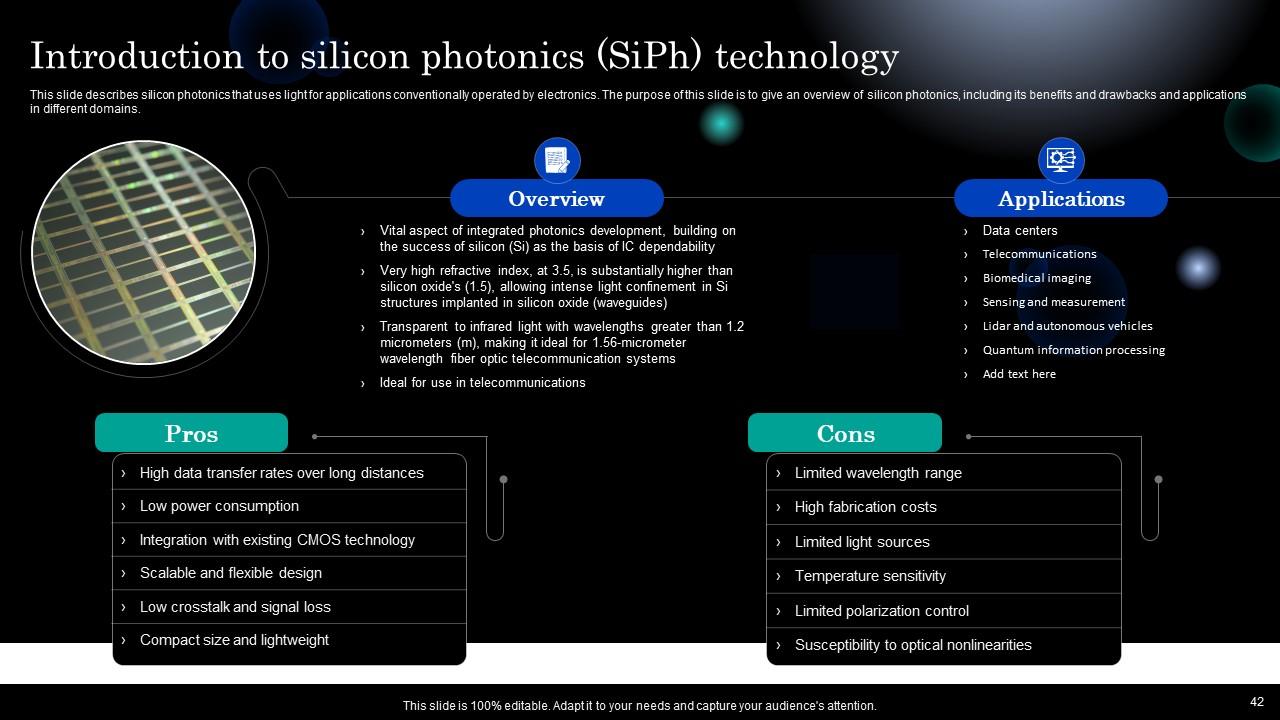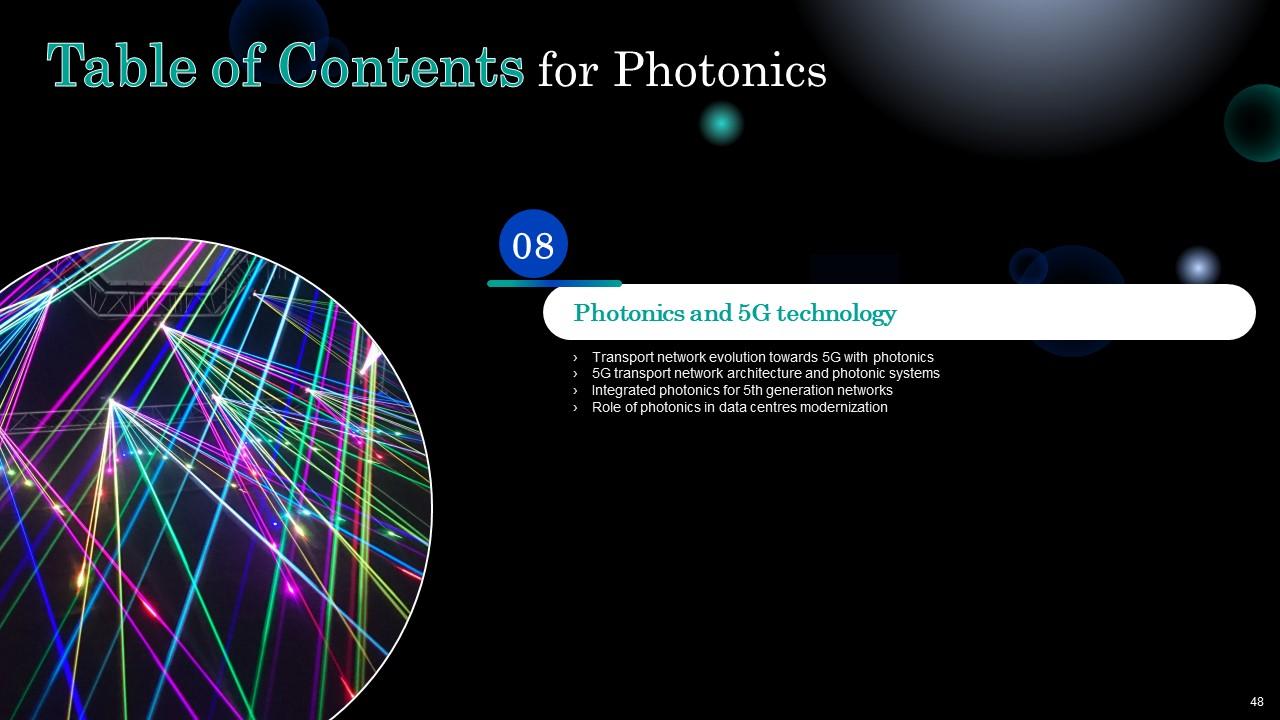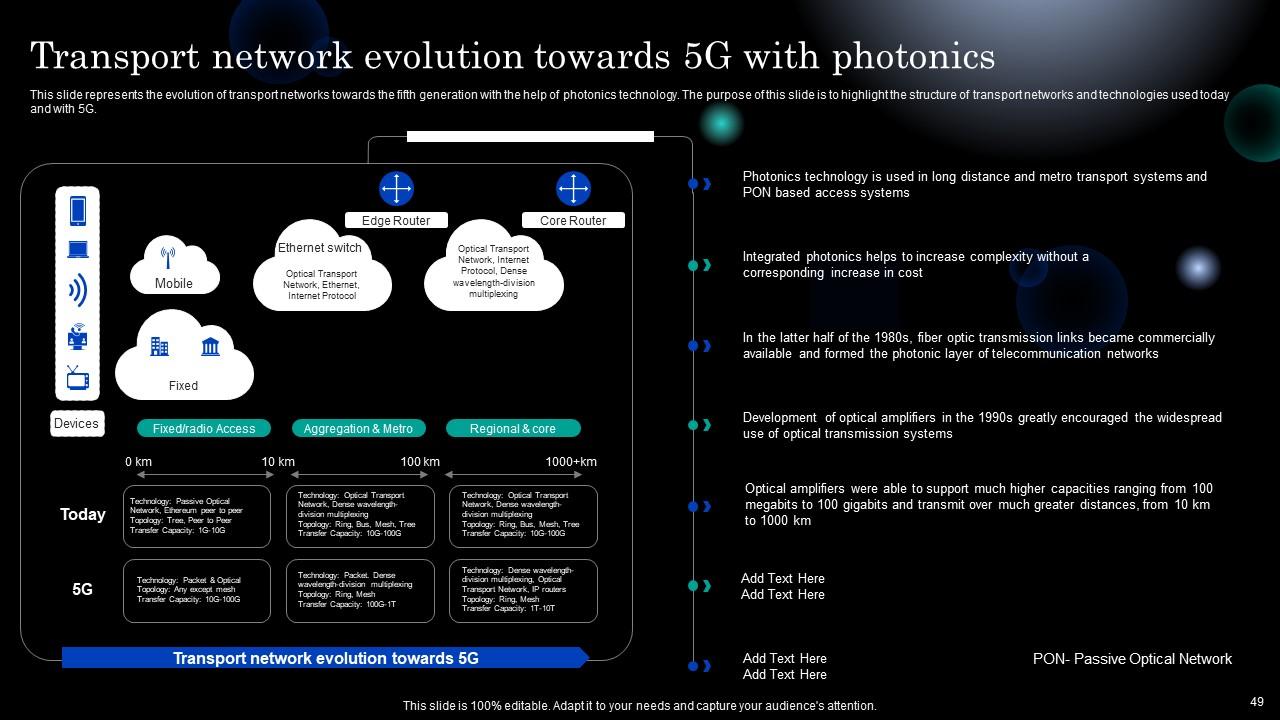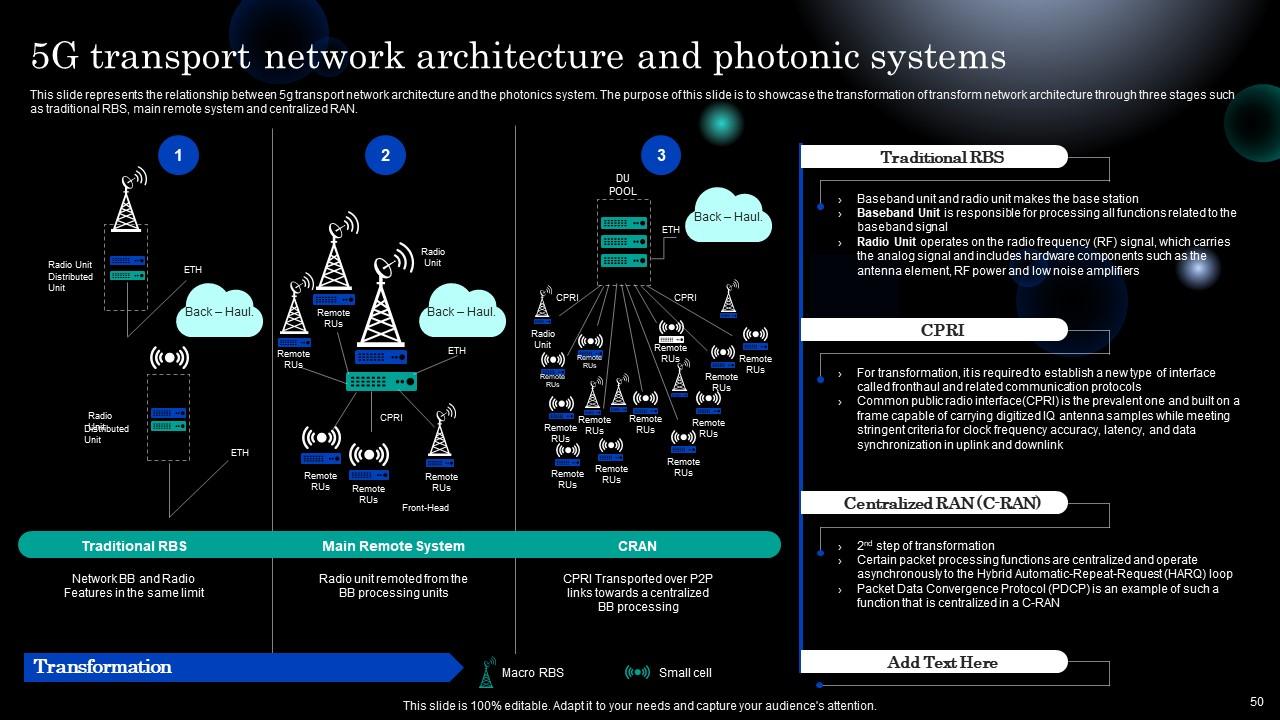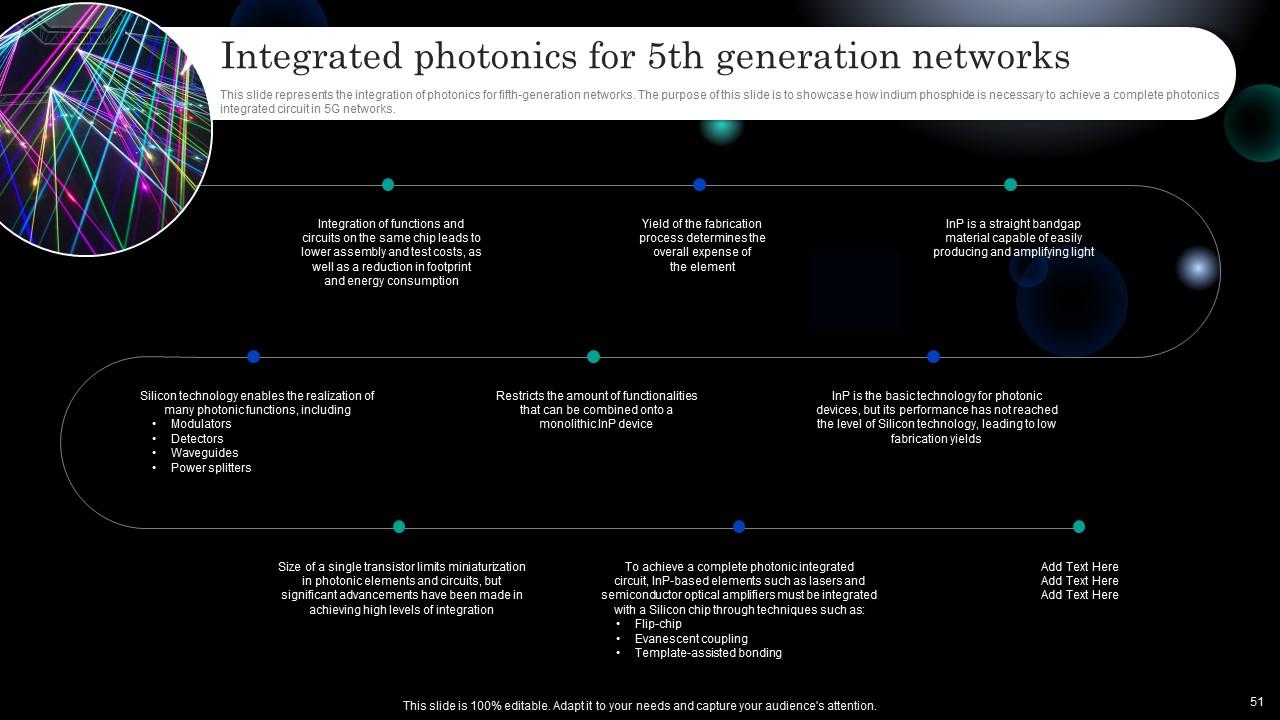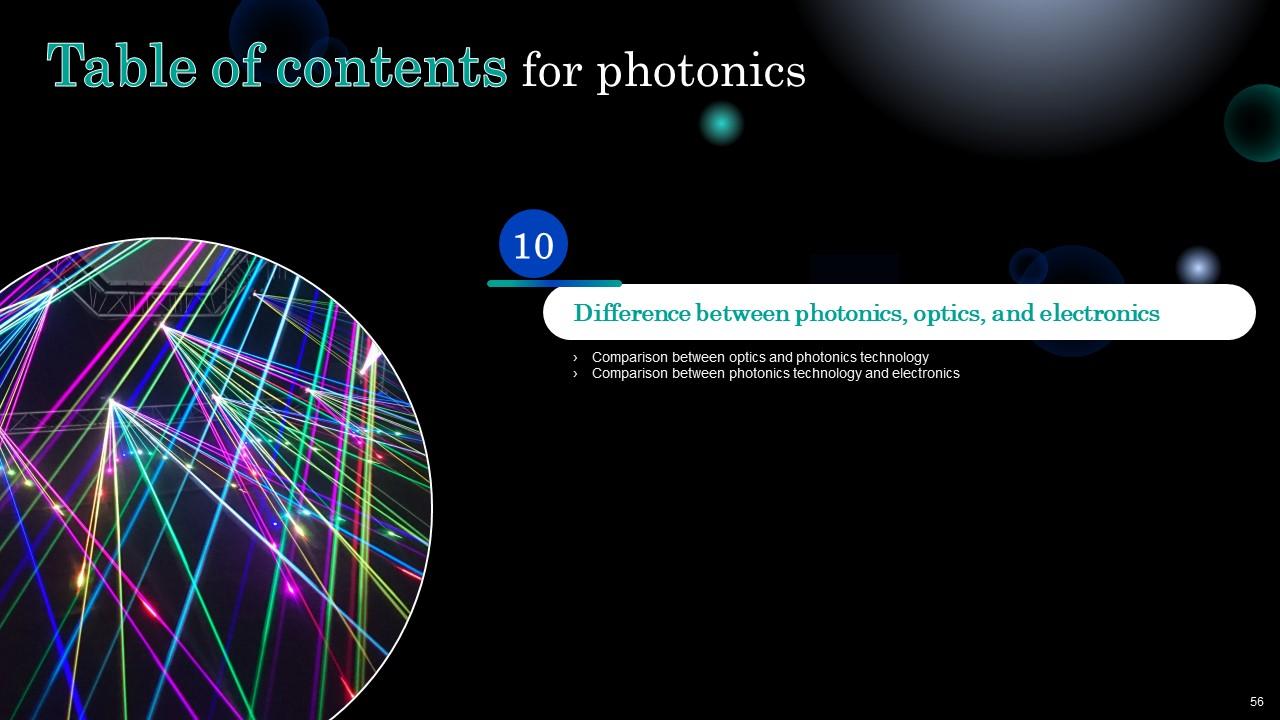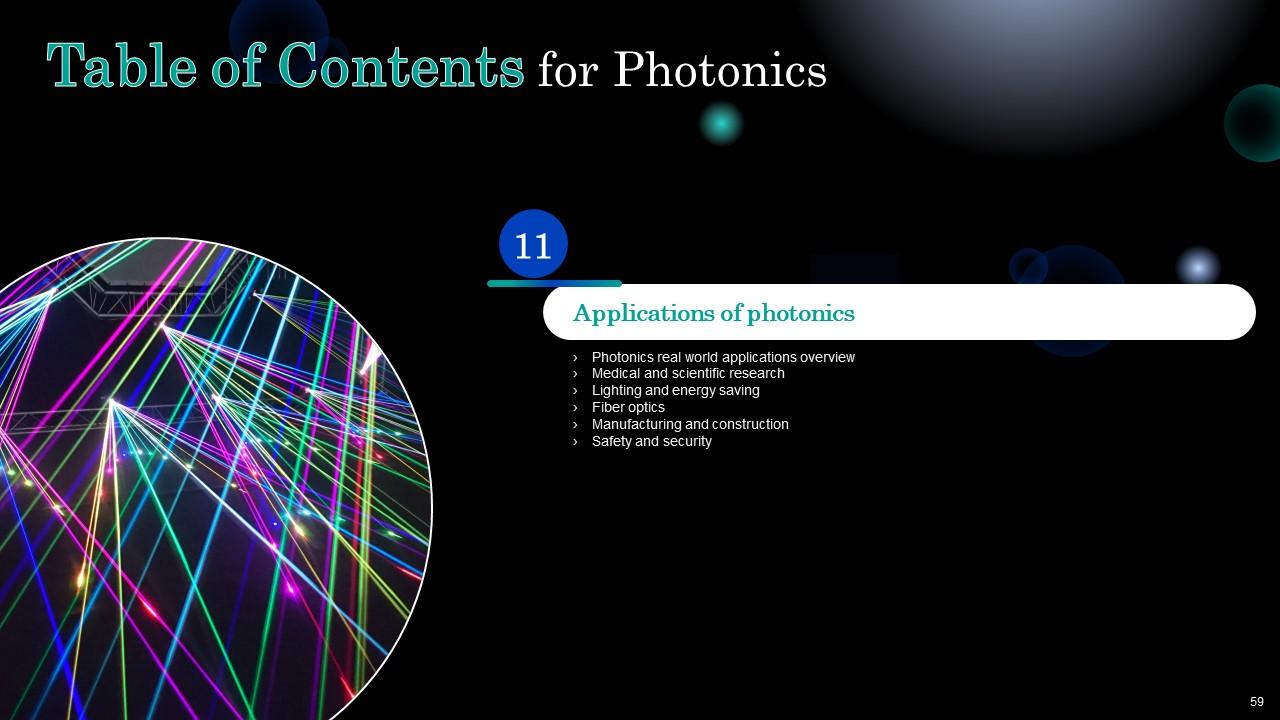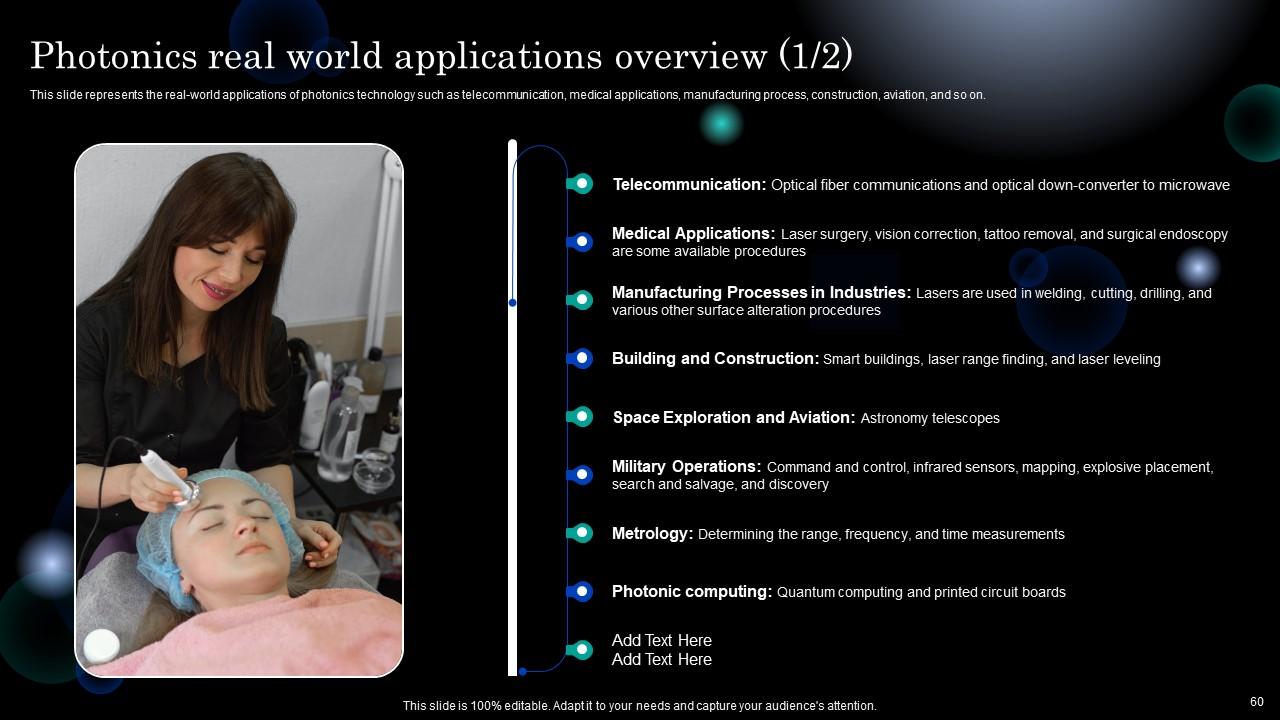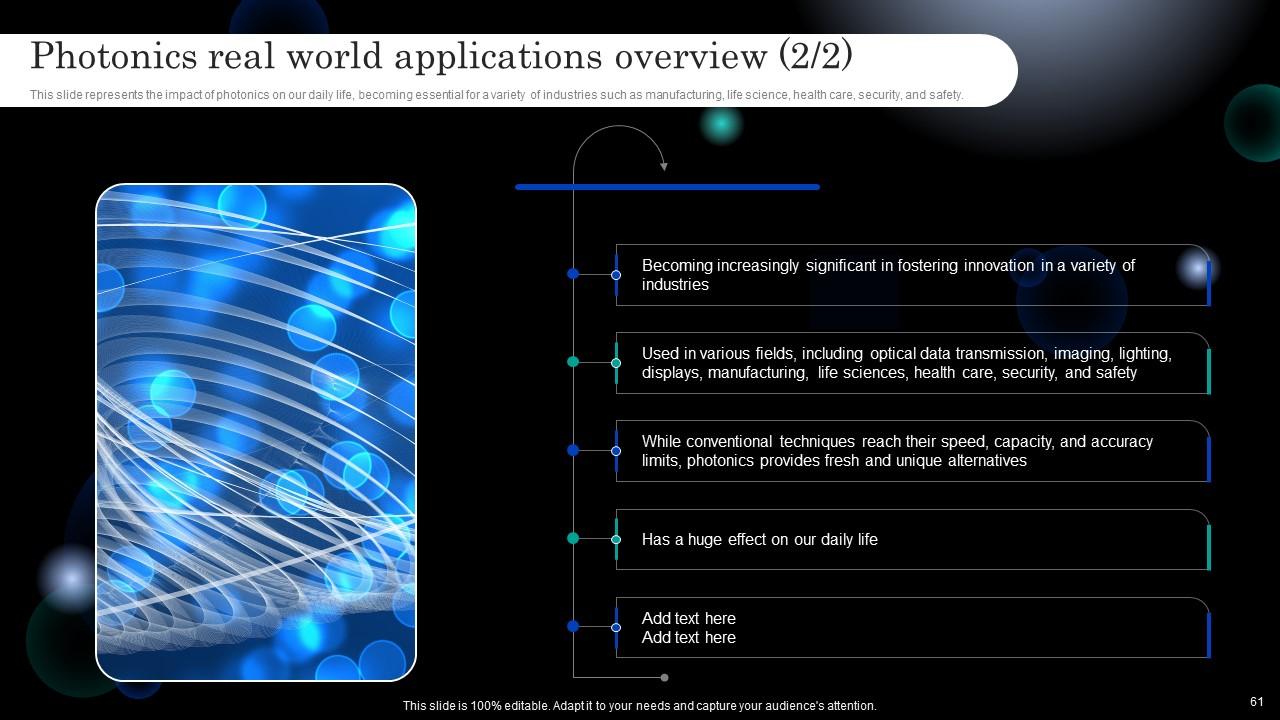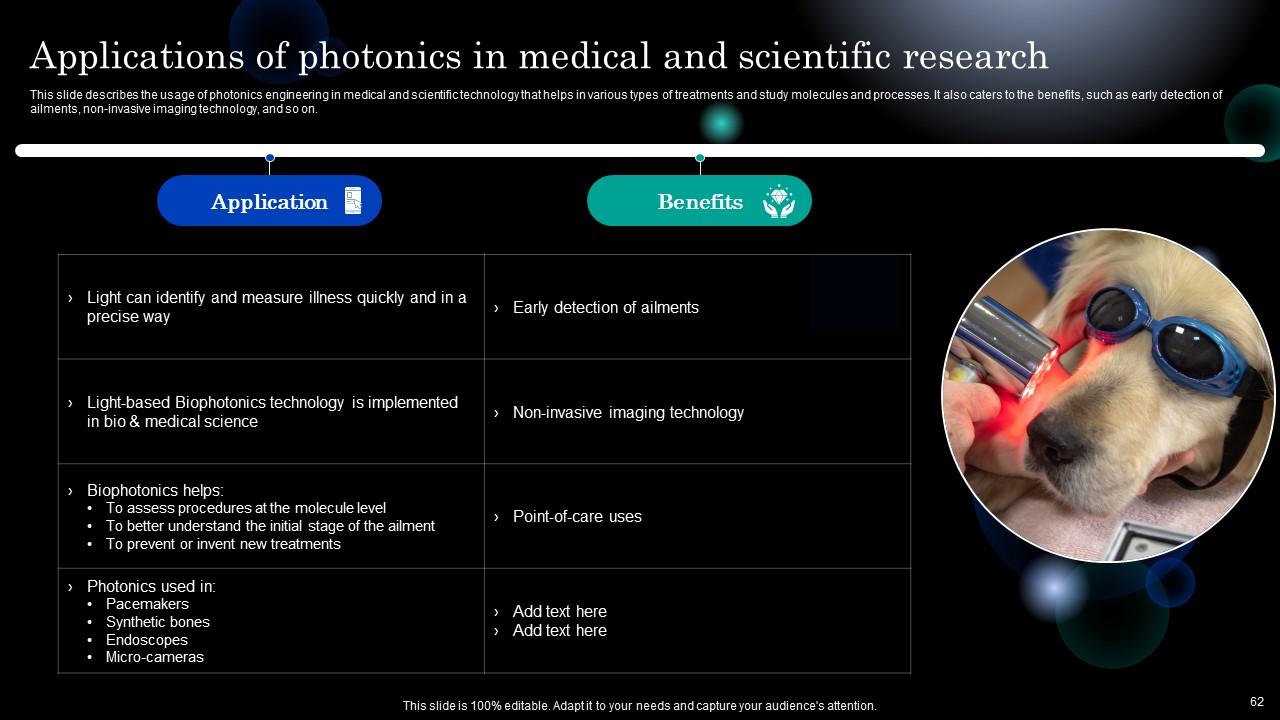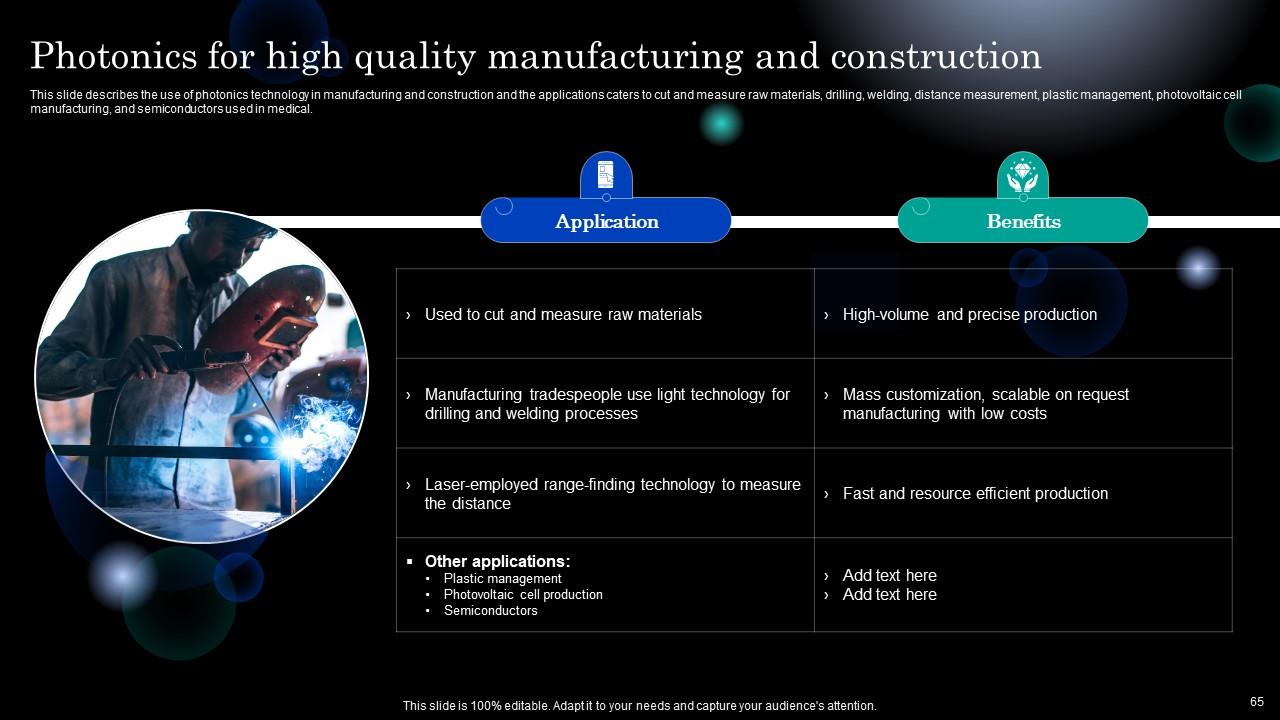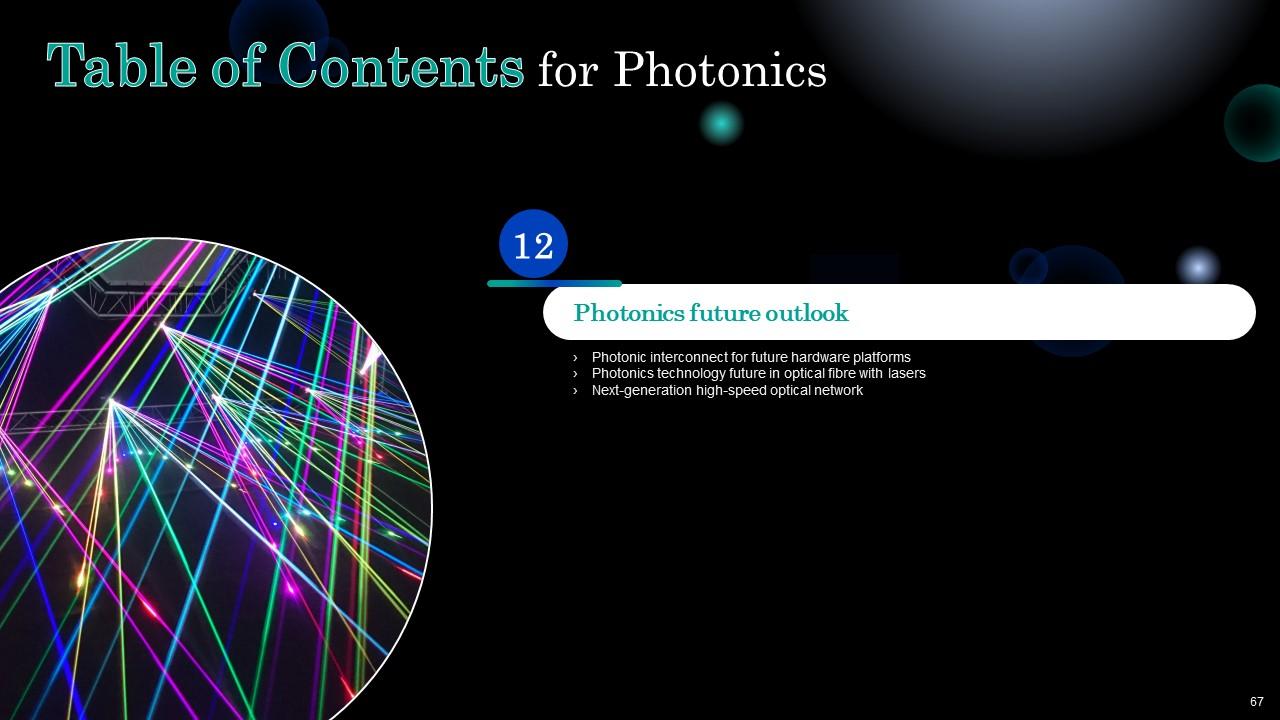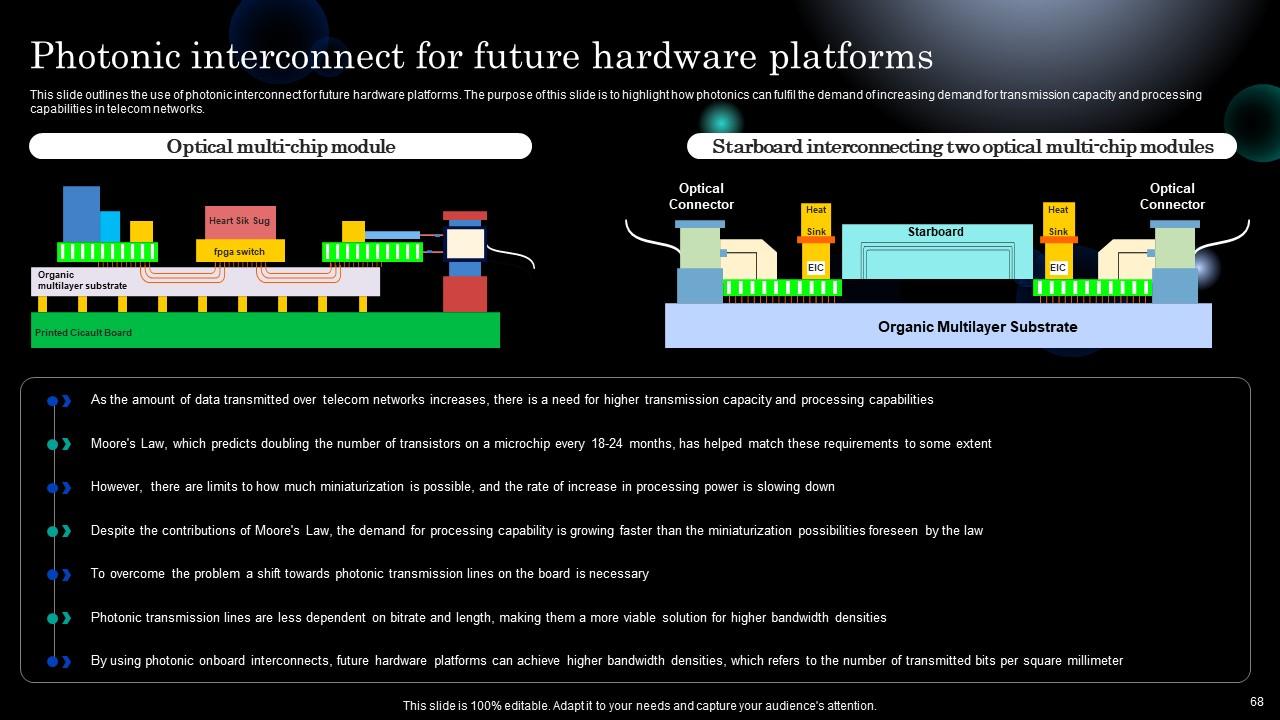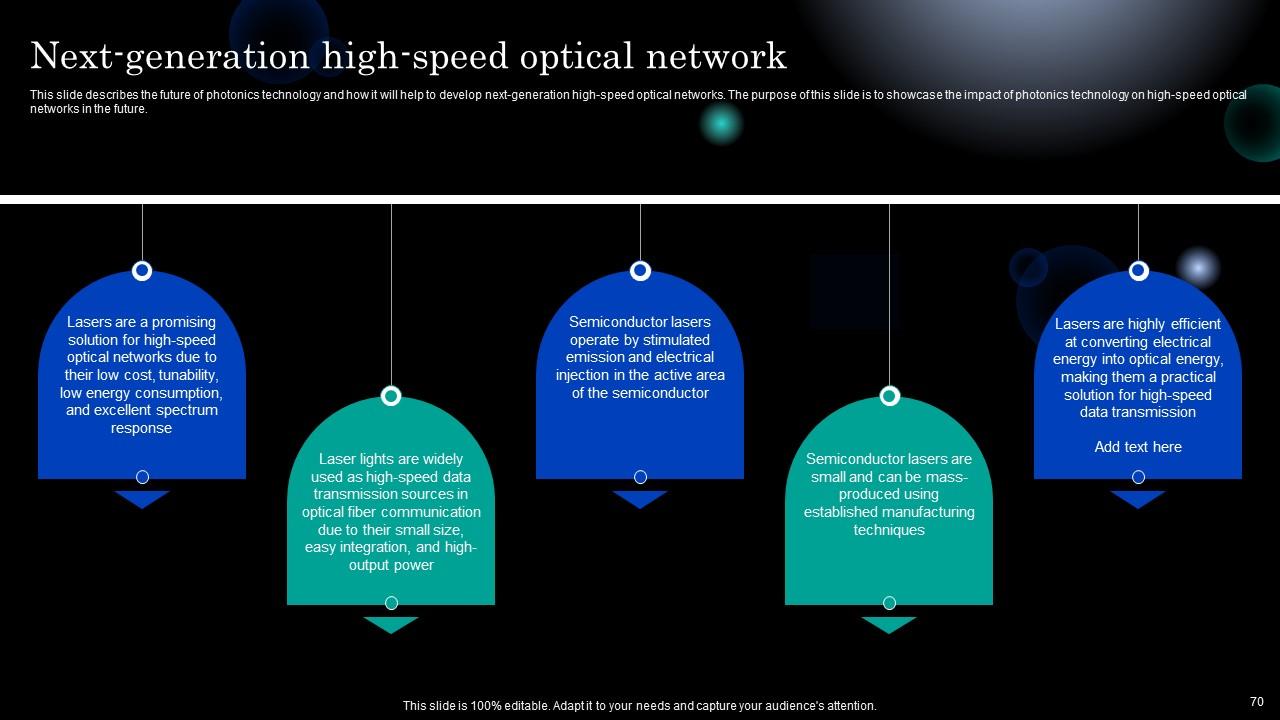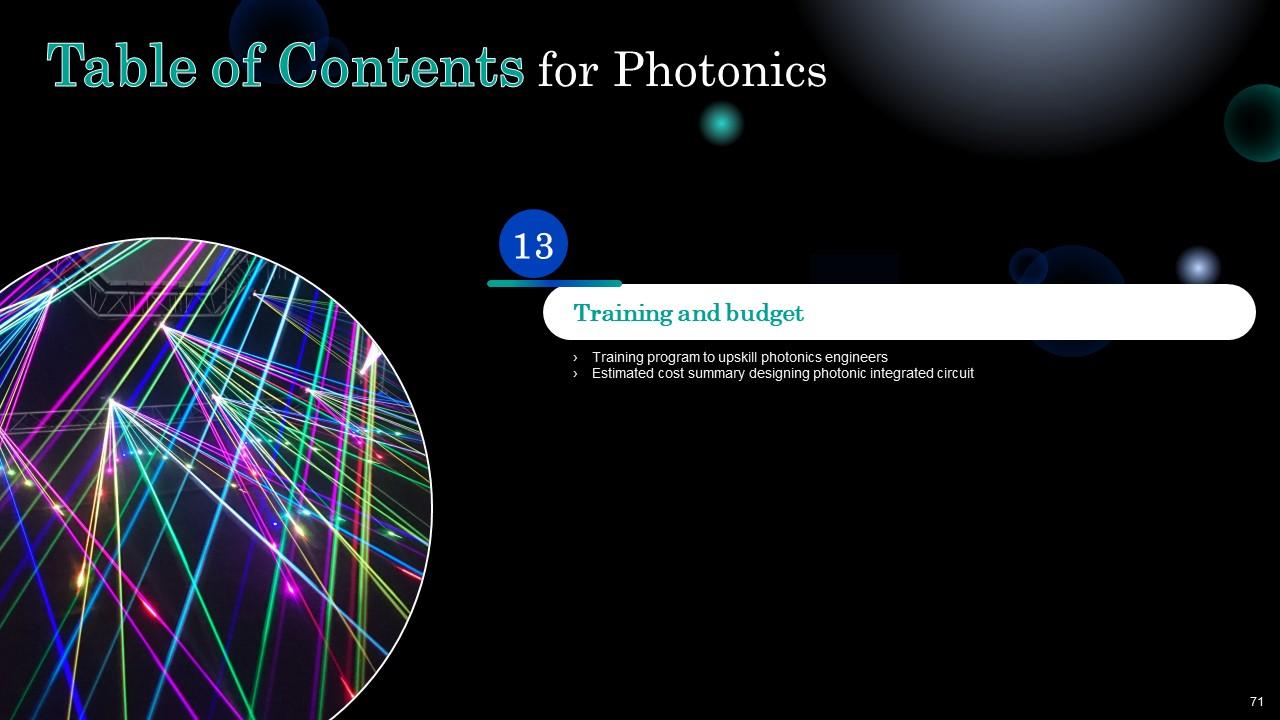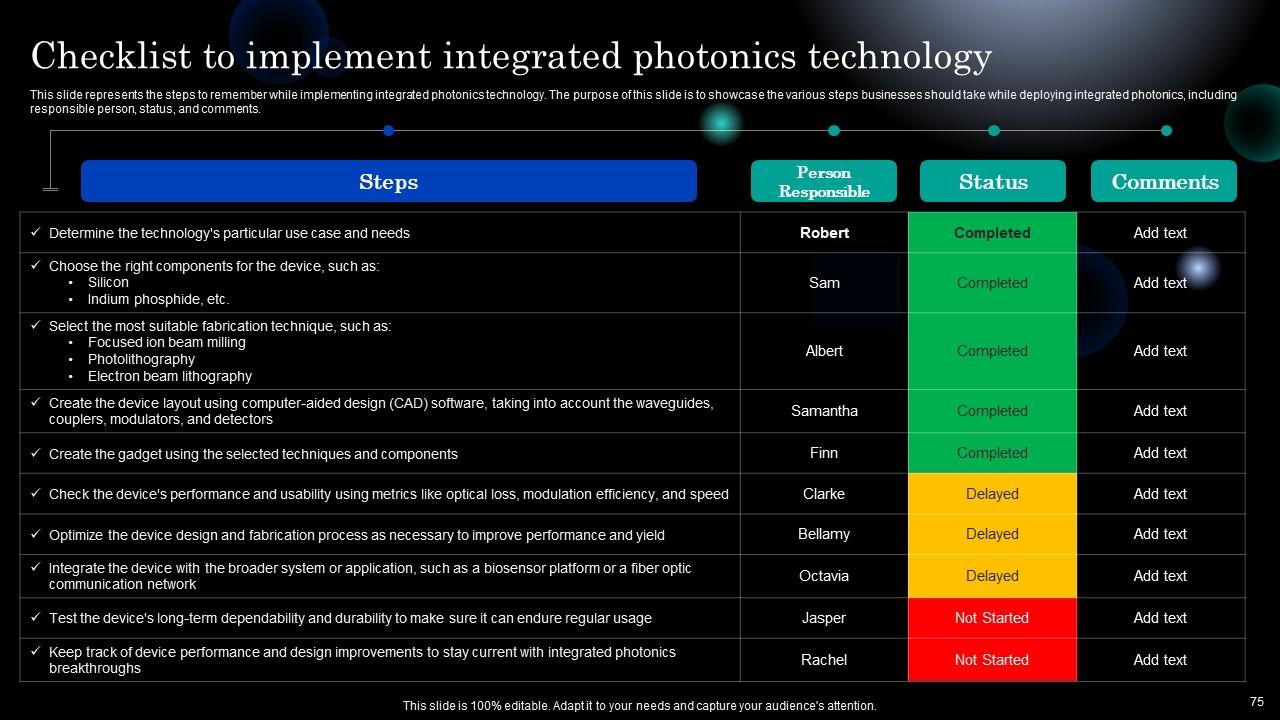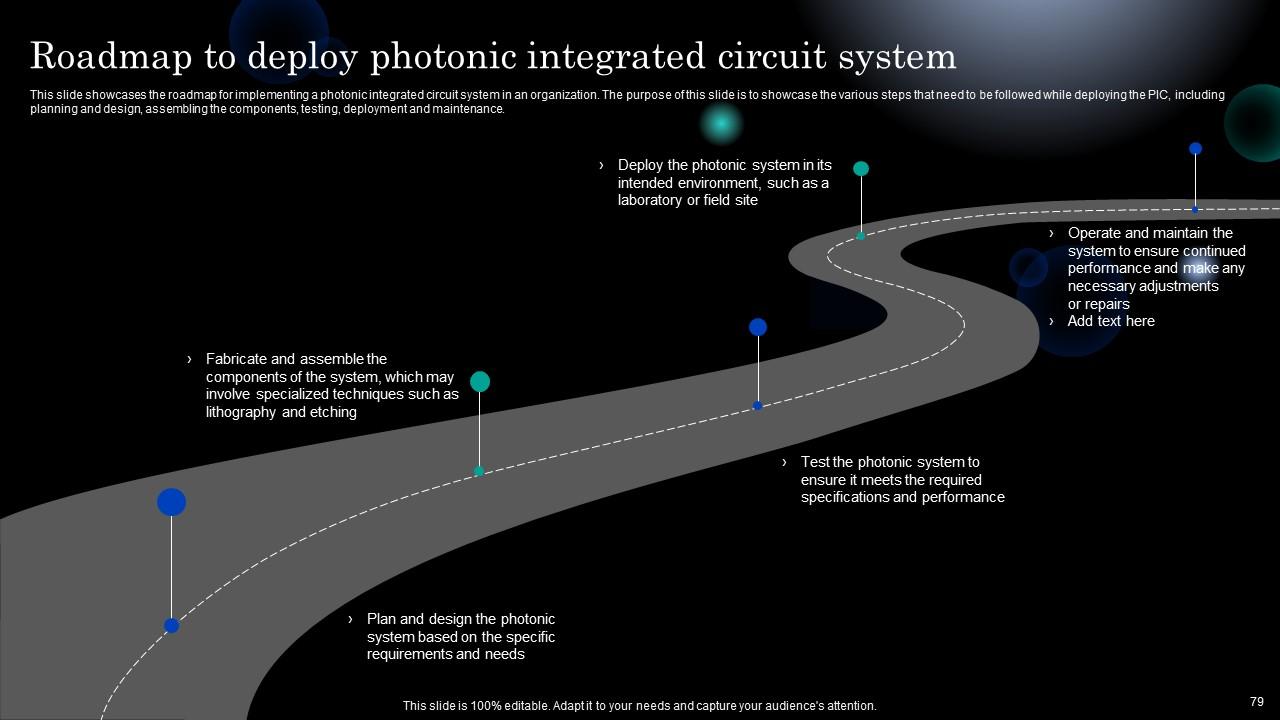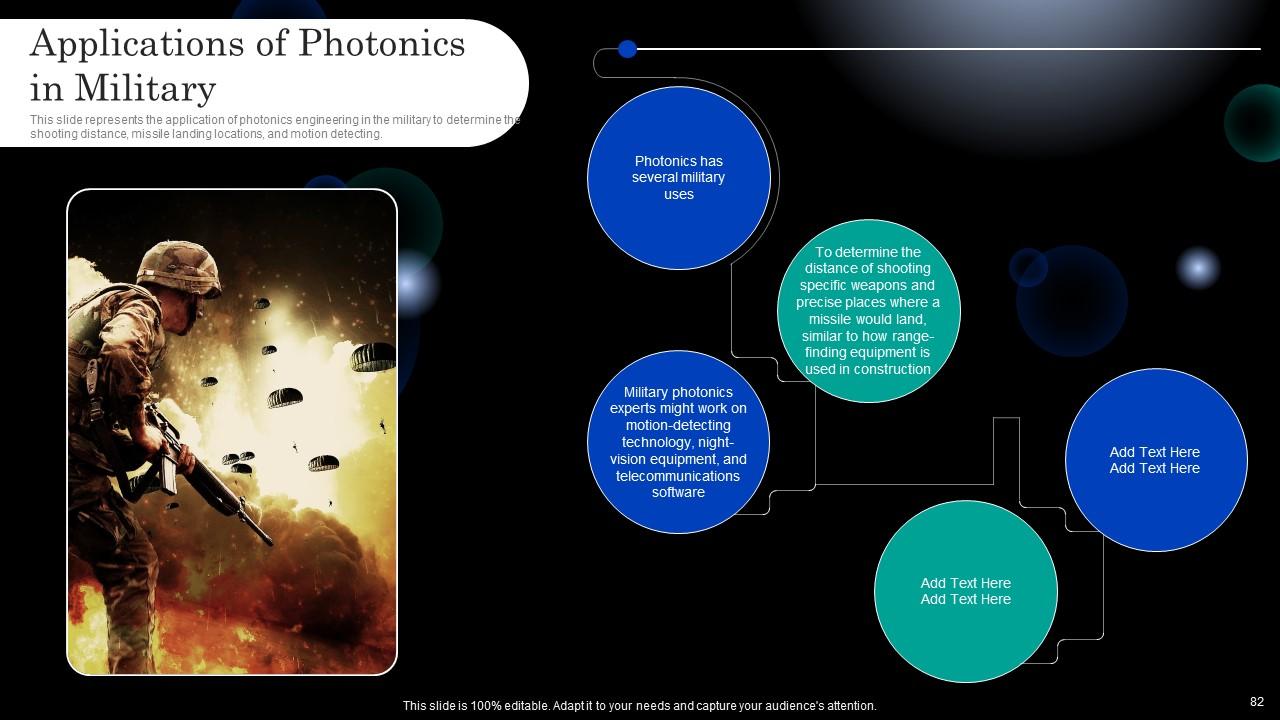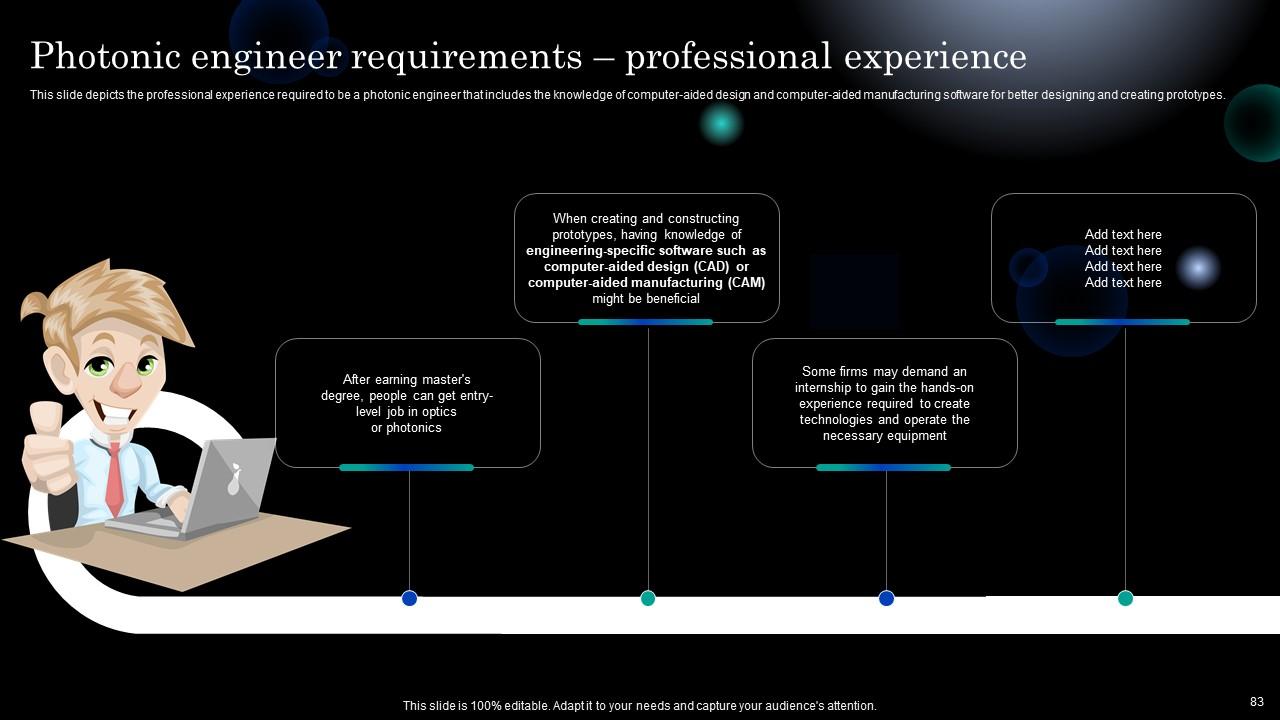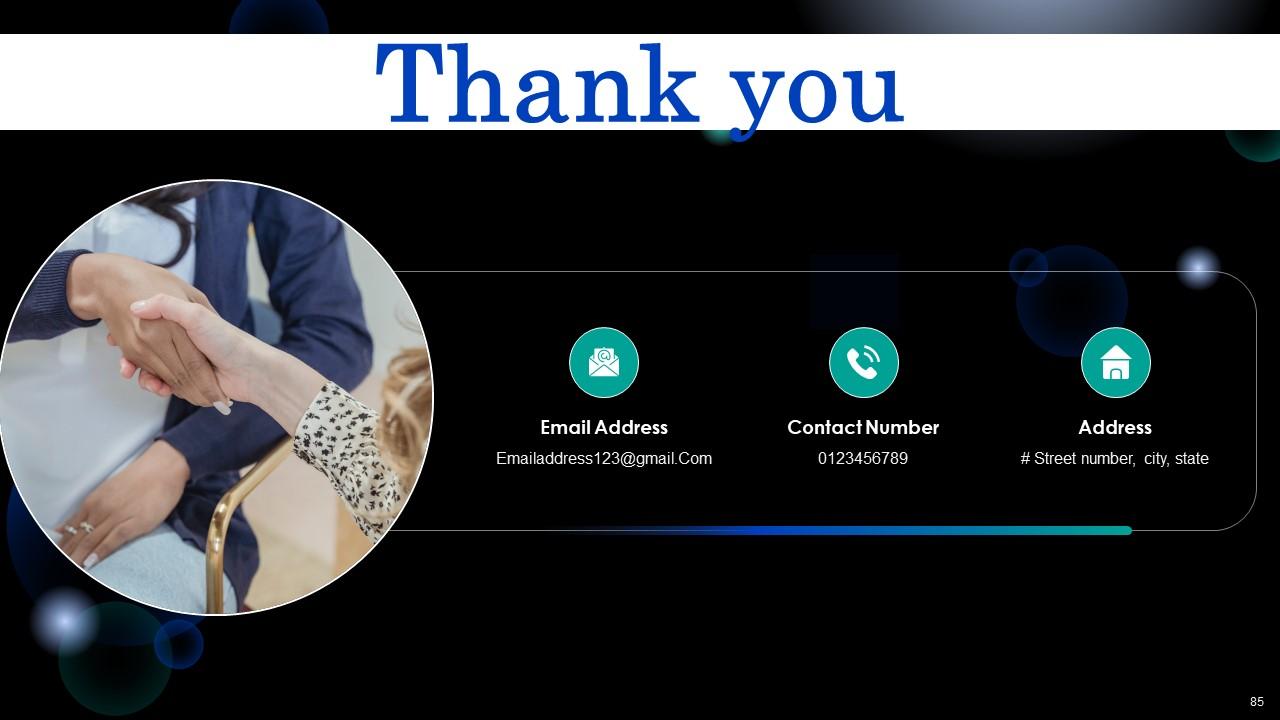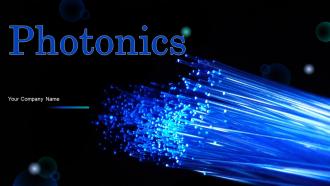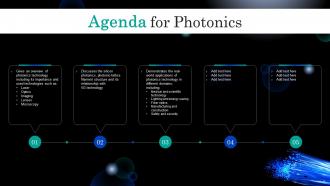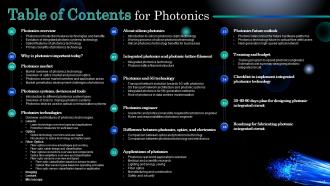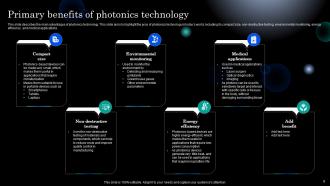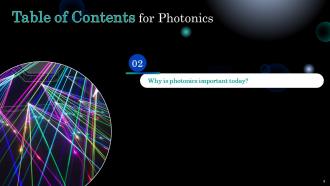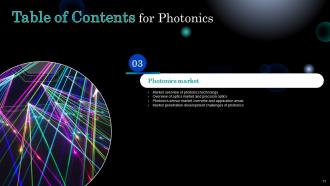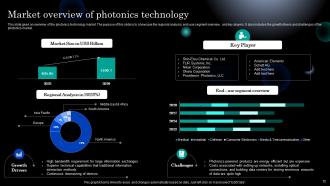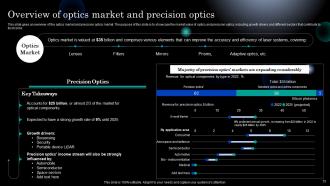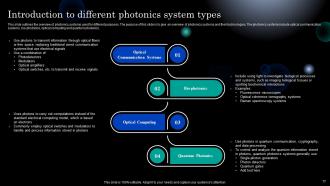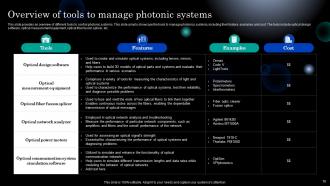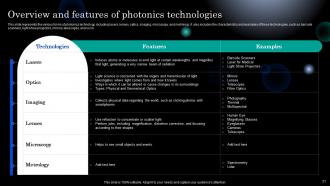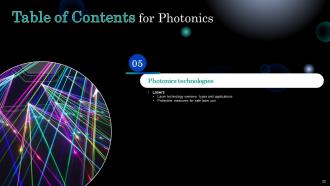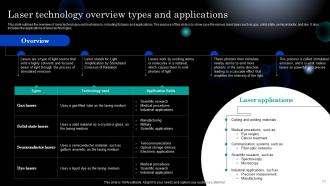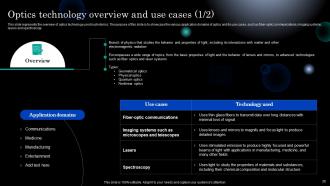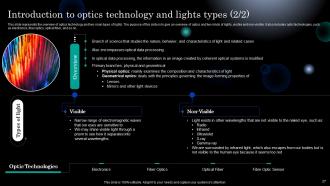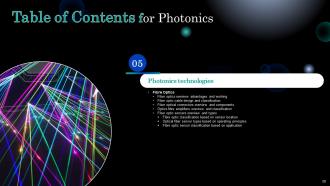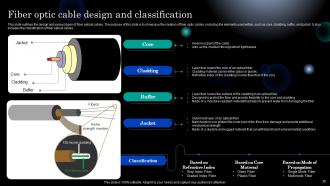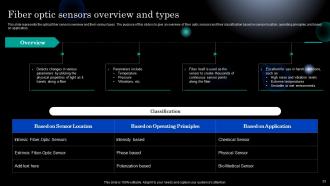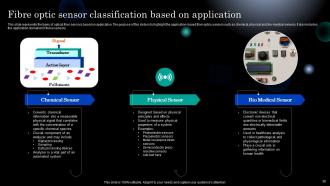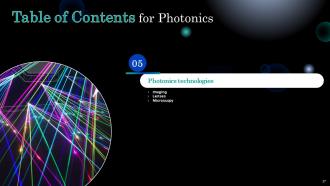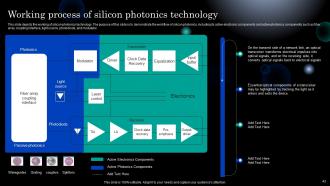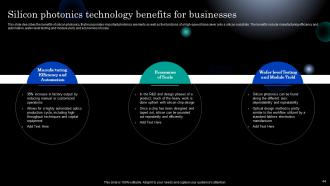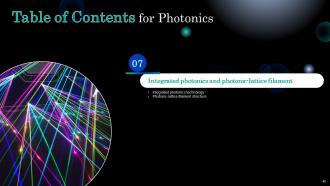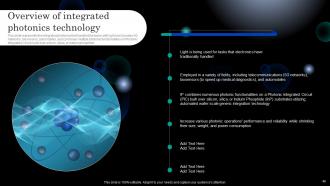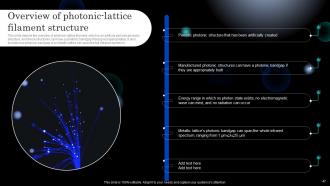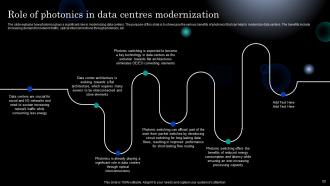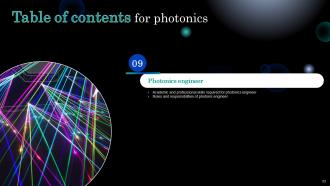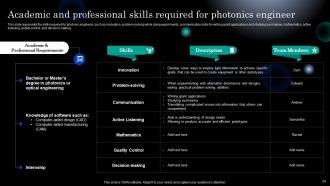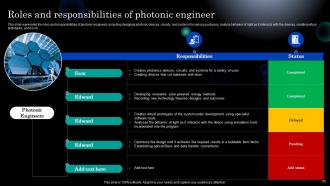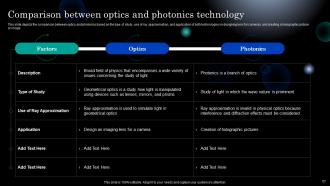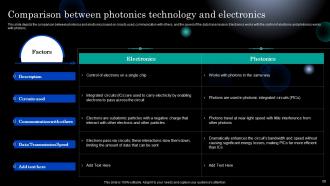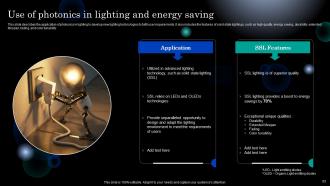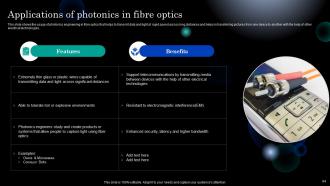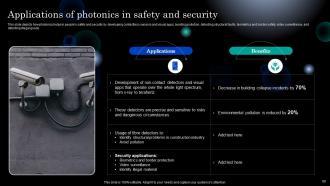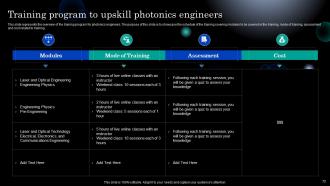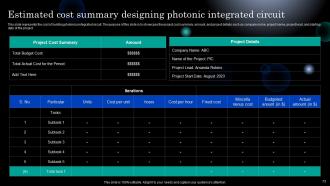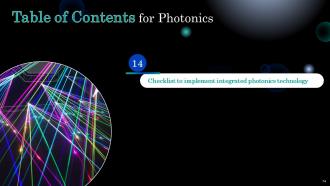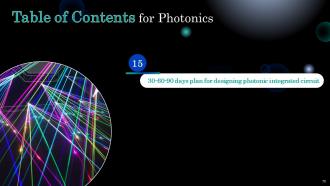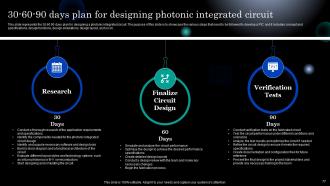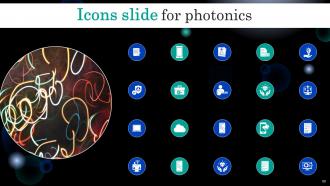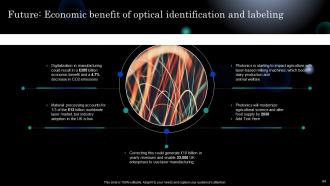Photonics Powerpoint Presentation Slides
Check out our professionally designed Photonics IT PowerPoint presentation briefly explains photonics, the physical science of light waves known as photonics. This Photonics PowerPoint Presentation covers the benefits and importance of photonics and market penetration development challenges and solutions. In addition, this Photon PPT contains an overview of photonics, technologies used in it such as laser, optics, imaging, lenses, and microscopy, silicon photonics, working and benefits of silicon photonics, integrated photonics, and photonics-lattice filament. Furthermore, this Waveguides template covers the difference between photonics, optics, and electronics and the applications of photonics in various sectors such as medical and scientific technology, fiber optics, manufacturing and construction, and military. In addition, Fiber Opticals Presentation contains a section on fiber optics, sensors, amplifiers, types of photonics systems, devices, and tools to manage photonics systems. Moreover, this Silicon Photonics PPT includes the relationship of photonics with 5G technology, the future outlook of photonics, and training and budget. Lastly, this Fibers Engineering deck comprises a 30 60 90 days plan and a roadmap for building the photonic integrated circuit. Download our 100 percent editable and customizable template, which is also compatible with Google Slides.
Check out our professionally designed Photonics IT PowerPoint presentation briefly explains photonics, the physical science..
- Google Slides is a new FREE Presentation software from Google.
- All our content is 100% compatible with Google Slides.
- Just download our designs, and upload them to Google Slides and they will work automatically.
- Amaze your audience with SlideTeam and Google Slides.
-
Want Changes to This PPT Slide? Check out our Presentation Design Services
- WideScreen Aspect ratio is becoming a very popular format. When you download this product, the downloaded ZIP will contain this product in both standard and widescreen format.
-

- Some older products that we have may only be in standard format, but they can easily be converted to widescreen.
- To do this, please open the SlideTeam product in Powerpoint, and go to
- Design ( On the top bar) -> Page Setup -> and select "On-screen Show (16:9)” in the drop down for "Slides Sized for".
- The slide or theme will change to widescreen, and all graphics will adjust automatically. You can similarly convert our content to any other desired screen aspect ratio.
Compatible With Google Slides

Get This In WideScreen
You must be logged in to download this presentation.
PowerPoint presentation slides
This complete deck covers various topics and highlights important concepts. It has PPT slides which cater to your business needs. This complete deck presentation emphasizes Photonics Powerpoint Presentation Slides and has templates with professional background images and relevant content. This deck consists of total of eighty five slides. Our designers have created customizable templates, keeping your convenience in mind. You can edit the color, text and font size with ease. Not just this, you can also add or delete the content if needed. Get access to this fully editable complete presentation by clicking the download button below.
People who downloaded this PowerPoint presentation also viewed the following :
Content of this Powerpoint Presentation
Slide 1: The slide introduces Photonics.
Slide 2: This is an Agenda slide. State your agendas here.
Slide 3: The slide displays Table of Contents for presentation.
Slide 4: The slide continues Table of Contents.
Slide 5: This slide shows the overview of photonics, which is the physical science of light waves and possesses two natures.
Slide 6: This slide outlines the innovation in integrated photonics technology over time.
Slide 7: This slide represents the characteristics of photonics technology.
Slide 8: This slide describes the main advantages of photonics technology.
Slide 9: The slide depicts another Table of Contents.
Slide 10: This slide shows the importance of photonics technology to humankind as we use devices.
Slide 11: The slide displays Table of Contents further.
Slide 12: This slide gives an overview of the photonics technology market.
Slide 13: This slide gives an overview of the optics market and precision optics market.
Slide 14: This slide outlines the overview of the photonics sensor market, including various application areas.
Slide 15: This slide represents the challenges and solutions of photonics in market penetration development.
Slide 16: The slide exhibits Table of Contents further.
Slide 17: This slide outlines the overview of photonics systems used for different purposes.
Slide 18: This slide provides an overview of different tools to control photonic systems.
Slide 19: This slide illustrates the various photonics devices used in optical communication systems to increase or amplify the signals.
Slide 20: The slide depicts another Table of Contents.
Slide 21: This slide represents the various forms of photonics technology.
Slide 22: The slide also displays Table of Contents.
Slide 23: This slide outlines the overview of laser technology used in photonics.
Slide 24: This slide describes the safety precautions to take while working with laser technology.
Slide 25: The slide contains Table of contents further.
Slide 26: This slide represents the overview of optics technology used in photonics.
Slide 27: This slide represents the overview of optics technology and two main types of lights.
Slide 28: The slide shows another Table of Contents.
Slide 29: This slide gives an overview of optical fiber technology, including its working and benefits.
Slide 30: This slide outlines the design and various types of fiber optical cables.
Slide 31: This slide provides an overview of fiber optic connectors and their components.
Slide 32: This slide provides an overview of optical fiber amplifiers and their types.
Slide 33: This slide represents the optical fiber sensors overview and their various types.
Slide 34: This slide outlines the optical fiber sensor types based on sensor location.
Slide 35: This slide describes the optic fiber sensor classification based on operating principles.
Slide 36: This slide represents the types of optical fiber sensors based on application.
Slide 37: The slide renders another Table of Contents.
Slide 38: This slide describes the overview of imaging technology used in photonics.
Slide 39: This slide outlines the overview of lenses technology used in photonics technology.
Slide 40: This slide talks about microscopy technology, including its various types and applications.
Slide 41: The slide illustrates Table of Contents further.
Slide 42: This slide describes silicon photonics that uses light for applications conventionally operated by electronics.
Slide 43: This slide depicts the working of silicon photonics technology.
Slide 44: This slide showcases the benefits of silicon photonics.
Slide 45: The slide renders title of contents which is to be discussed further.
Slide 46: This slide represents the integrated photonics that handled the tasks with light.
Slide 47: This slide depicts the overview of photonic-lattice filament.
Slide 48: The slide displays title of contents further.
Slide 49: This slide represents the evolution of transport networks towards the fifth generation with the help of photonics technology.
Slide 50: This slide highlights the relationship between 5g transport network architecture and the photonics system.
Slide 51: This slide illustrates the integration of photonics for fifth-generation networks.
Slide 52: The slide explains how photonics plays a significant role in modernizing data centers.
Slide 53: The slide renders another title of contents.
Slide 54: This slide represents the skills required for photonic engineers.
Slide 55: This slide represents the roles and responsibilities of photonic engineers.
Slide 56: The slide highlights title of contents further.
Slide 57: This slide depicts the comparison between optics and photonics.
Slide 58: This slide depicts the comparison between photonics and electronics.
Slide 59: The slide also presents title of contents.
Slide 60: This slide represents the real-world applications of photonics technology.
Slide 61: This slide presents the impact of photonics on our daily life, becoming essential for a variety of industries.
Slide 62: This slide describes the usage of photonics engineering in medical and scientific technology.
Slide 63: This slide displays the application of photonics in lighting to develop new lighting technologies to fulfil user requirements.
Slide 64: This slide shows the usage of photonics engineering in fibre optics.
Slide 65: This slide describes the use of photonics technology in manufacturing and construction.
Slide 66: This slide depicts how photonics helps in people's safety and security by developing contactless sensors and visual apps.
Slide 67: The slide exhibits title of contents further.
Slide 68: This slide outlines the use of photonic interconnect for future hardware platforms.
Slide 69: This slide depicts the future applications of photonics technology in optical fibre with lasers.
Slide 70: This slide describes the future of photonics technology and how it will help to develop next-generation high-speed optical networks.
Slide 71: The slide displays another title of contents.
Slide 72: This slide represents the overview of the training program for photonics engineers.
Slide 73: This slide presents the cost of building photonics integrated circuit.
Slide 74: The slide also contains title of contents.
Slide 75: This slide represents the steps to remember while implementing integrated photonics technology.
Slide 76: The slide renders title of contents further.
Slide 77: This slide represents the 30 60 90 days plan for designing a photonic integrated circuit.
Slide 78: The slide again describes title of contents.
Slide 79: This slide showcases the roadmap for implementing a photonic integrated circuit system in an organization.
Slide 80: This slide shows all the icons included in the presentation.
Slide 81: This slide is titled as Additional Slides for moving forward.
Slide 82: This slide represents the application of photonics engineering in the military.
Slide 83: This slide depicts the professional experience required to be a photonic engineer.
Slide 84: The slide highlights Future: Economic benefit of optical identification and labeling.
Slide 85: This is a Thank You slide with address, contact numbers and email address.
Photonics Powerpoint Presentation Slides with all 90 slides:
Use our Photonics Powerpoint Presentation Slides to effectively help you save your valuable time. They are readymade to fit into any presentation structure.
FAQs
Photonics technology is the physical science of light waves and encompasses two natures: wave nature, which refers to light behaving as a wave, and particle nature, where light consists of discrete packets called photons.
Integrated photonics technology has evolved through innovation, leading to the integration of various optical components onto a single chip. This evolution has enabled more compact and efficient optical systems.
Photonics technology offers several advantages, including high data transfer rates, energy efficiency, compactness, low latency, and the ability to transmit and process large amounts of information using light.
Photonics technology has a wide range of applications, including optical communication systems, medical and scientific technologies, lighting, fiber optics, manufacturing, construction, safety and security systems, and future high-speed optical networks.
Photonics technology plays a crucial role in modernizing data centers and enabling the evolution of transport networks towards fifth-generation (5G) networks. It helps integrate photonics into 5G transport network architecture for enhanced communication and network performance.
-
Placing an order on SlideTeam is very simple and convenient, saves you a lot of your time.
-
Every time I ask for something out-of-the-box from them and they never fail in delivering that. No words for their excellence!





